The Perseverance Of Human Curiosity: NASA Explains Some Odd Martian Images
Based on all the things that scientists have discovered on our neighboring planet over the years, we can say that Mars is a pretty crazy place. And it’s not just an interest for science enthusiasts; it’s also a major topic around many conspiracy theories. Regardless of what you believe, we can say that the more we explore Mars, the weirder things get.
These photos show the huge supply of bizarre but fascinating things found on the planet. Although there’s always a scientific explanation or an insight behind every curiosity, there’s no denying that Mars is still alien to us. And until we advance to manned missions to Mars, all we can do is speculate and look at NASA’s images like we would with cloud-watching. Let’s explore a sampling of the images from our celestial neighbor.
A bizarre discovery
A Phillips drill bit was found on Mars in late 2020, and things couldn’t get more interesting… We’re just kidding, but it’s really fun to think of it as a piece of equipment. It’s an odd-looking small-sized rock that was spotted by the Curiosity Rover.
There’s not much mystery attached to this one because, if you were the Curiosity Rover, you’d find a lot of weird-looking rocks on this planet. This particular rock has a certain shine to it, but that’s probably the only special thing about it.
Dinosaurs rocking Mars
If we ever started finding fossils on Mars, it would pique the curiosity of a lot of people. That has yet to happen, though. Software engineer Kevin Gill found this rock in a picture clicked by the Perseverance Rover last year.
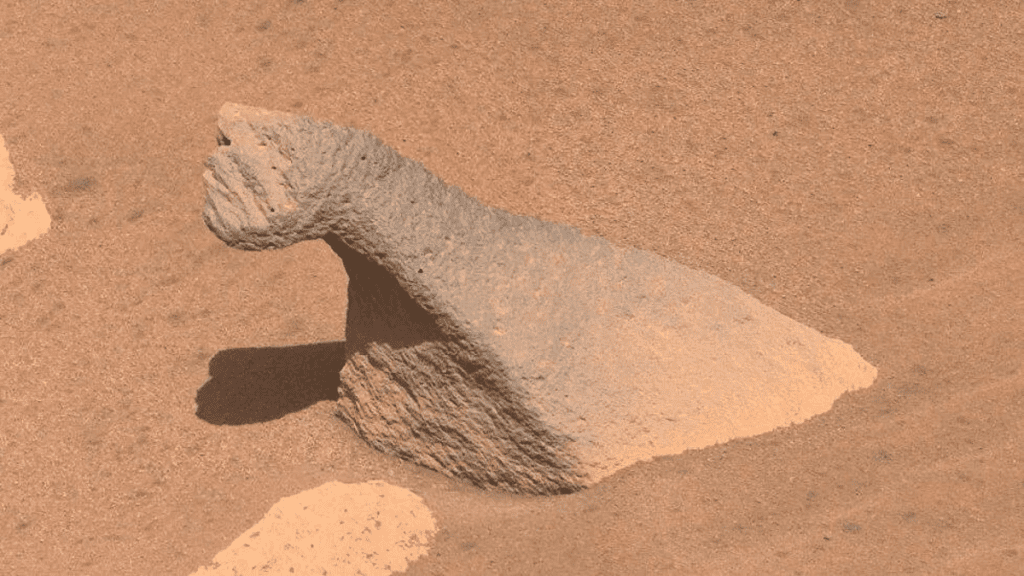
In reality, it’s a very funny-looking rock that just looks like a Brachiosaurus, which is actually what the scientists called this rock. As far as finding life on Mars goes, we’re still looking for signs of microbes on Mars, so finding giant dinosaurs is a stretch.
Mascot on Mars
We wish Mars had human food. It’d make manned missions a lot easier. Even though there aren’t peanuts, there seems to be a Mr. Peanut lookalike. This object was spotted by the HiRise camera team for the Reconnaissance Orbiter in May 2021. But, it gets more interesting.
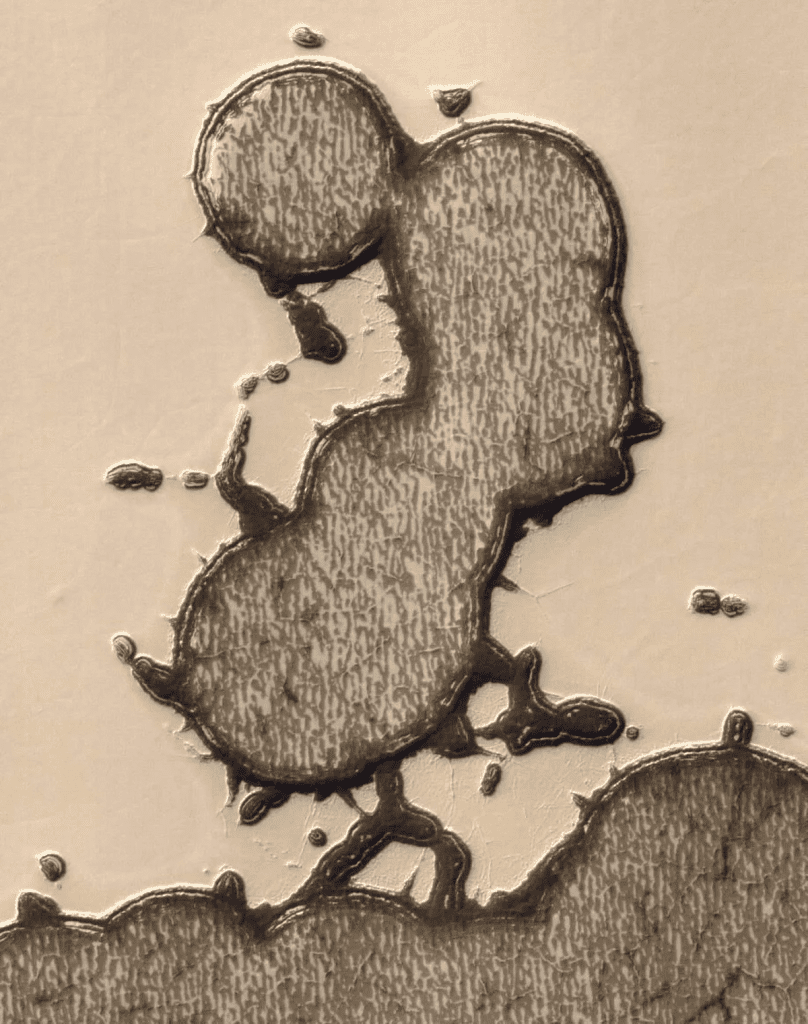
These shapes are actually a collection of pits, which were formed as a result of multiple changes in the south polar residual cap. Carbon dioxide sublimates from the slopes and condenses on the flat areas, forming these Mr. Peanut-like pits.
Just another rock
When someone finally sets foot on Mars, it’ll be broadcast worldwide. Since that hasn’t happened yet, we can rule out the possibility of this object being a boot. And it’s not the result of a robot “footprint,” either. Can you guess what it is?
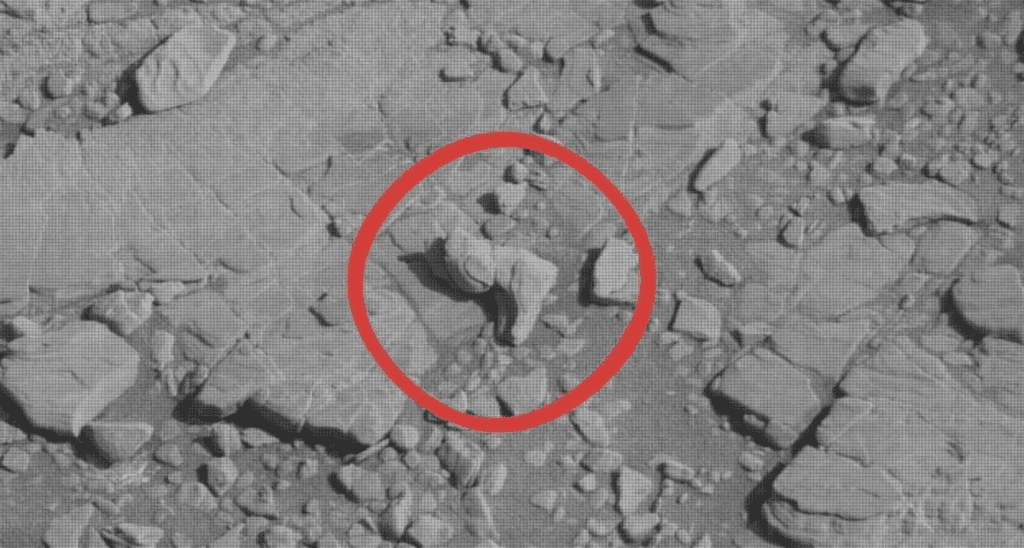
With humans and robots ruled out, it’s simple. It’s just a rock. This image was captured in early 2019 by NASA’s Curiosity Rover. The image was pretty famous because it looked like a human’s boot, but it just had a funny shape.
Dust devils wreaking havoc
Is this the proof of the supernatural on Mars? Not quite. This image was captured by NASA’s Reconnaissance Orbiter in 2018. The image is so clear because of the HiRise camera in the Orbiter. The black lines are called dust devils.
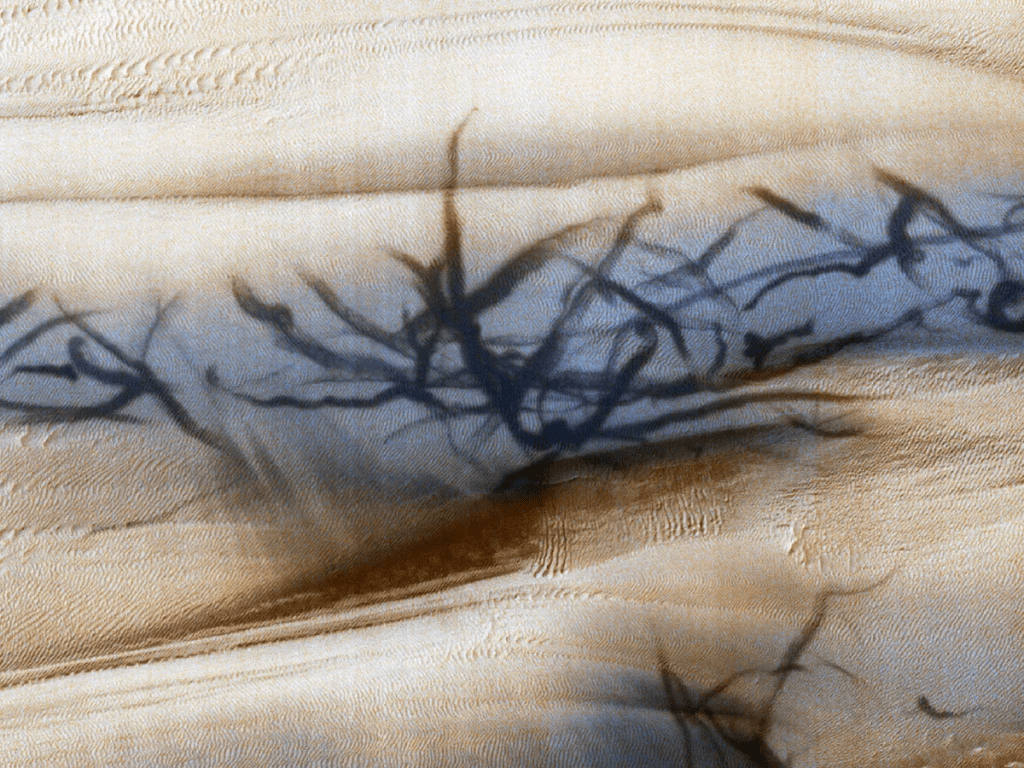
Because of the clarity of the camera, these wild dust devil tracks almost look like fresh claw marks on the planet’s surface. It feels spooky if you see the image out of context, but just know that this planet has really strong winds, so it’s common to see this.
Stranded on Mars
The stuff that you see in this image is indeed man-made, but there were no crooked intentions involved. In February of last year, NASA’s Perseverance Rover landed on Mars. It dropped a belly pan, which you see below, on purpose.
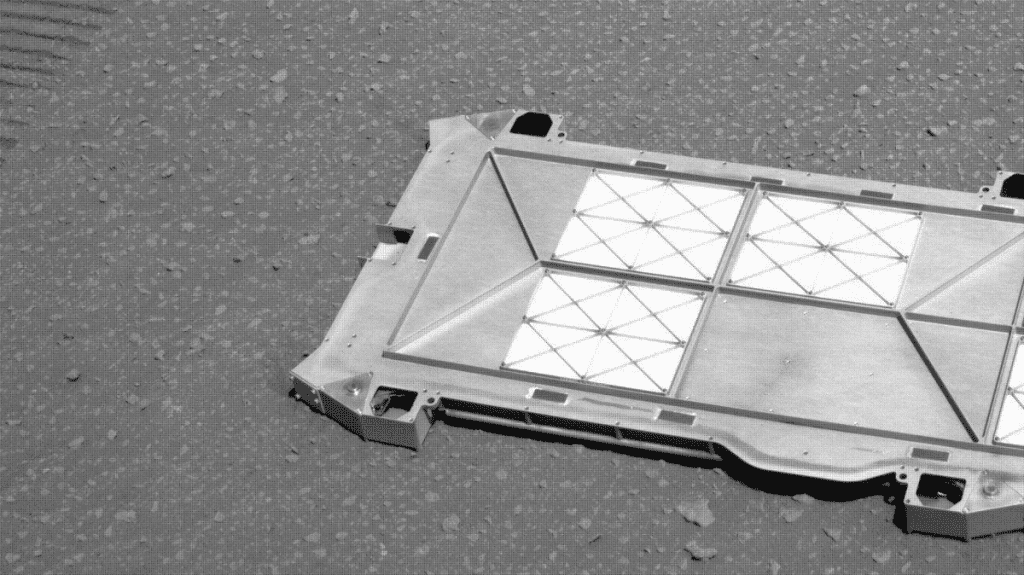
So, even if it looks mysterious, it’s just some debris on the ground. The pan helped the rover collect and cache rock samples. But, the pan was only useful until landing, so once it touched down on the planet, the pan was left behind.
Boulder problems
Is that a sign of life on Mars? It seemed like it until scientists looked into the matter and found out what it was. In December 2020, NASA’s Curiosity Rover clicked this image that shows a mysterious object on the Martian landscape.
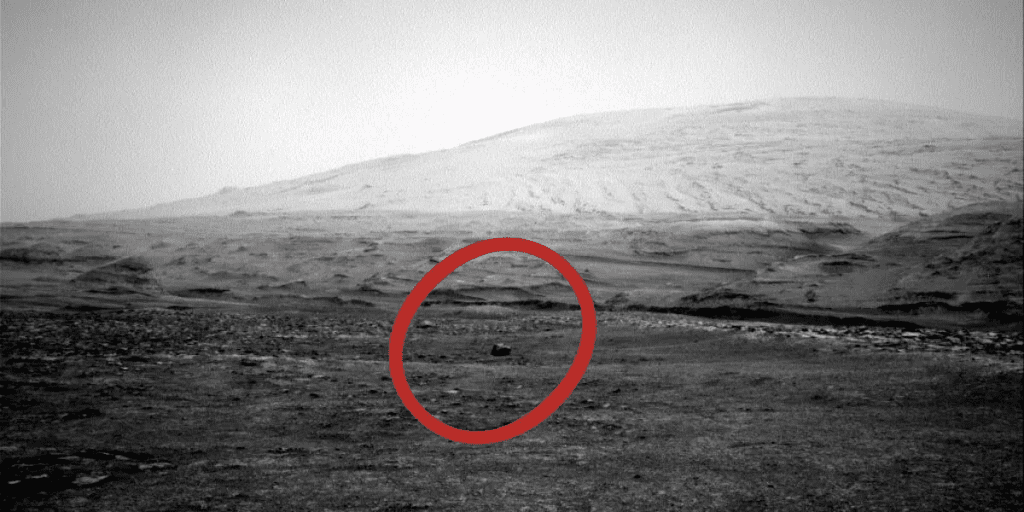
It turns out that it’s nothing but a huge boulder in the middle of nowhere. What’s fascinating is how it stands out from its surroundings. There’s a high chance that this boulder is just a meteorite. If not, it was deposited from a different area on the planet.
Martian volcanic eruptions
Is it just us, or does that look like a crack running through Mars’ landscape? If there was a split in the planet’s surface, we surely would have heard of it by now. In reality, this crack is a result of Mars’ volcanic past.
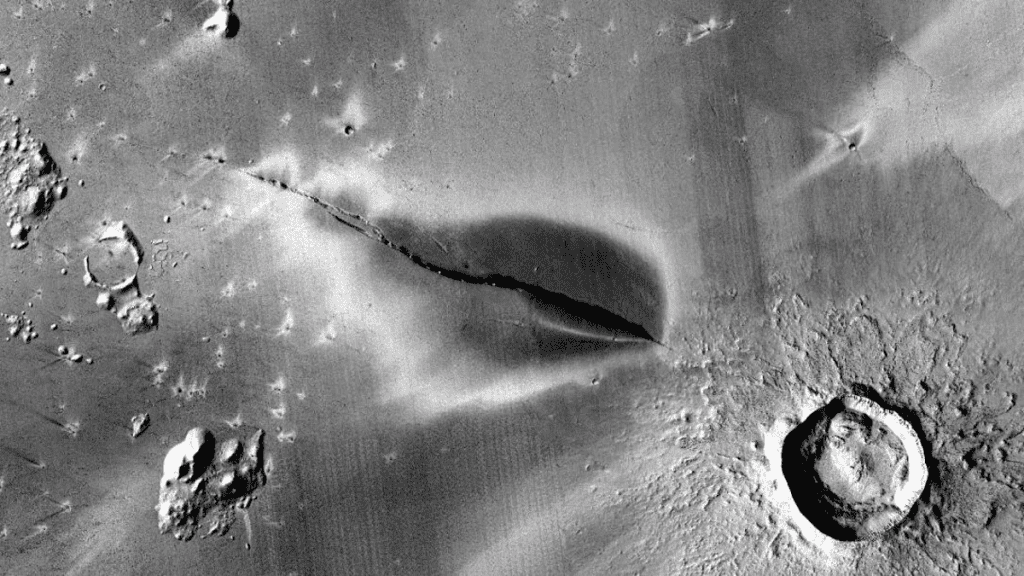
According to scientists, this dark deposit on the land is clear evidence of a volcanic eruption. Now, can you guess how old this volcanic eruption could be? 50,000 years, more or less. The image doesn’t give us a clear idea about the deposit’s size, but it’s actually larger than Washington DC.
Pancakes, but not in the shape you want
Pancakes on Mars. That would be the perfect headline for the front page of a newspaper. Come to think of it, this looks more like somebody failed at making pancakes, since the shape is so distorted. After all, such incidents often happen on a busy Tuesday morning.
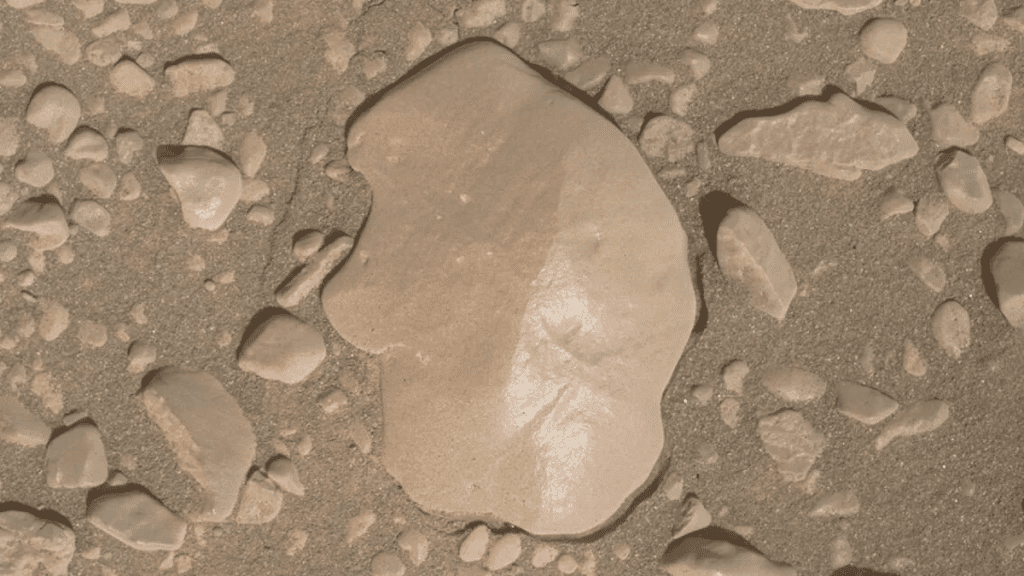
This image was clicked by NASA’s Curiosity Rover in 2020. It’s a shiny, almost flat rock. Shiny rocks could be an interesting discovery, too, but that’s not it. The rock’s sheen is a result of consistent wind and sand action.
The face of the planet
Don’t we all love an interesting space story? Well, here’s an image from the NASA Perseverance Rover that tells quite the tale in itself. You can call it a face, you can call it someone’s bottom, or you can decide not to label it at all.
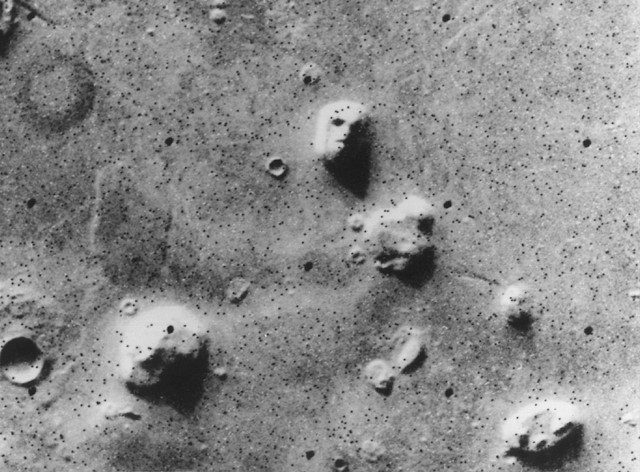
The fact is that it’s none of the things mentioned above. It’s just a weird rock formation. Those with a creative mind would see that this rock formation has two eyes, a nose, a mouth, and a unique hairstyle akin to Elvis’. But let’s be realistic here!
More about the face
Earlier, we saw a rock on Mars that somehow looks like Elvis. We let that go with an explanation, but when this was discovered, there was no way NASA was going to leave it alone. In 2001, things were cleared up a bit…
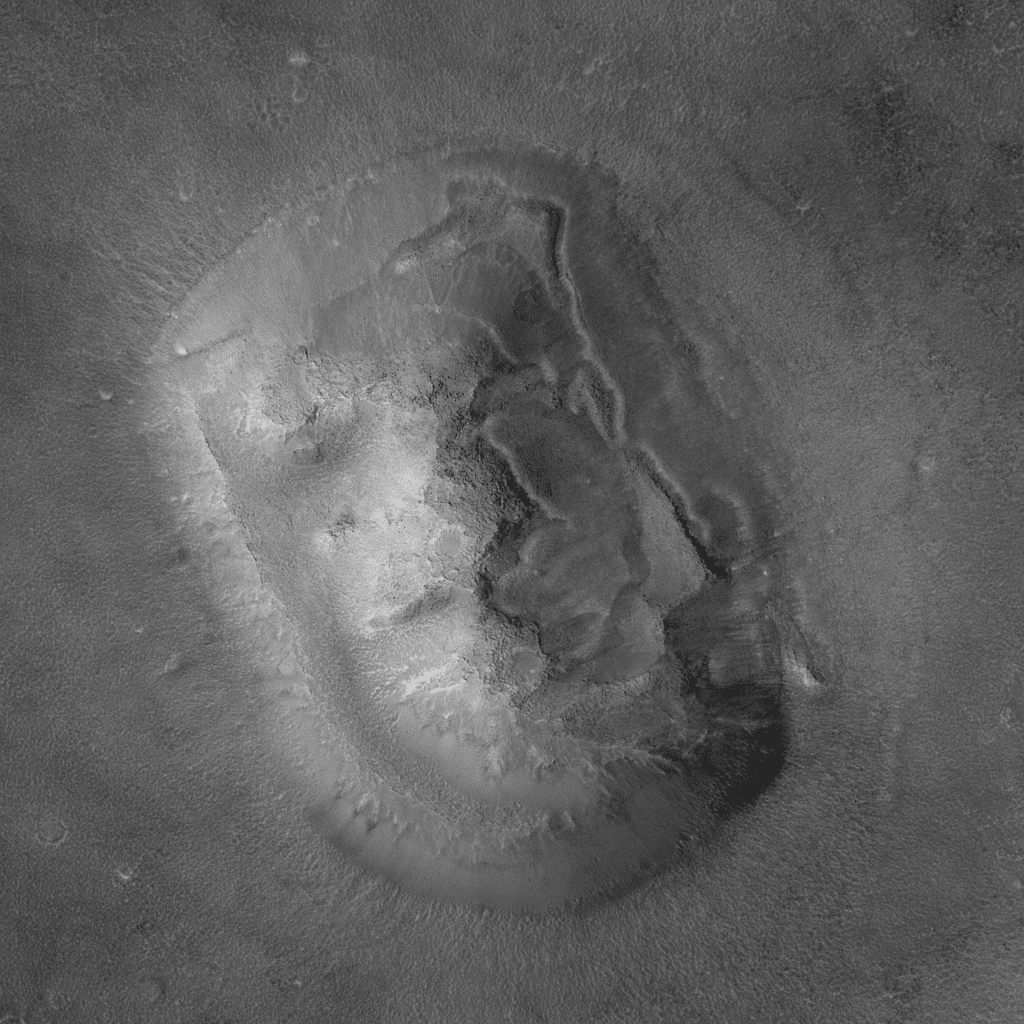
That year, the Mars Global Surveyor clicked an image of the notorious face. This time, the image is sharper and in a better resolution, as you can see. It was now clear that it’s just some kind of a mesa, like we said earlier.
Instant noodles
A couple of months ago, the NASA Perseverance Mars Rover clicked an image of what appears to be a tangled bunch of strings. We assure you, though, that it’s not random noodles. Without humans on Mars, it’s too soon to find food strewn about.
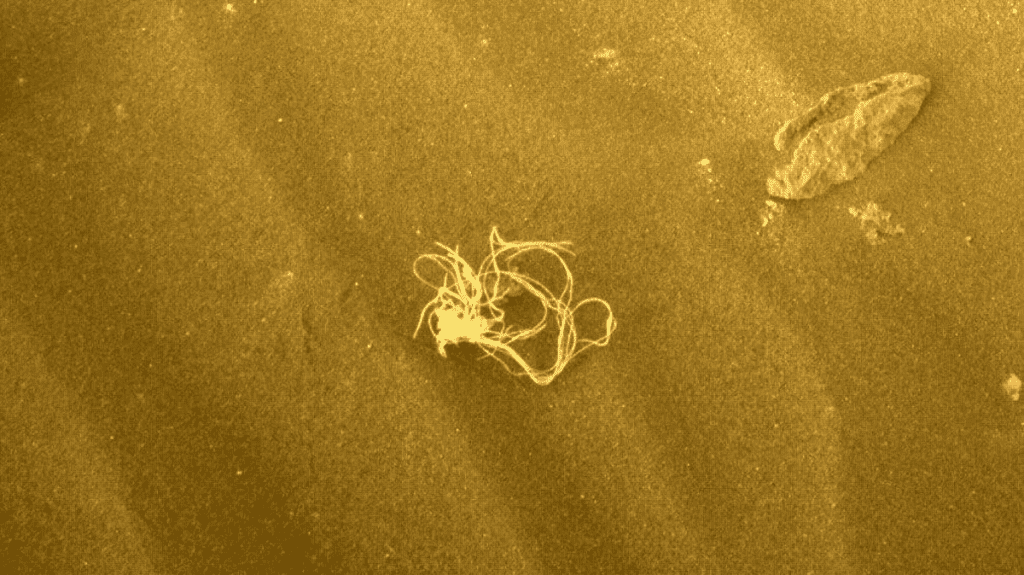
After going through a lot of possibilities, NASA declared that it was some netting that was blown from a nearby crash site across the Jerezo Crater. Often, a lot of debris is found in weird places, due to Mars’ strong winds.
Desert vibes
These spikes look like dried trees in a desert, but they’re more interesting than that. NASA’s Curiosity Rover captured an image of these formations in early 2022. These spikes were formed as a result of erosion of a sedimentary rock.
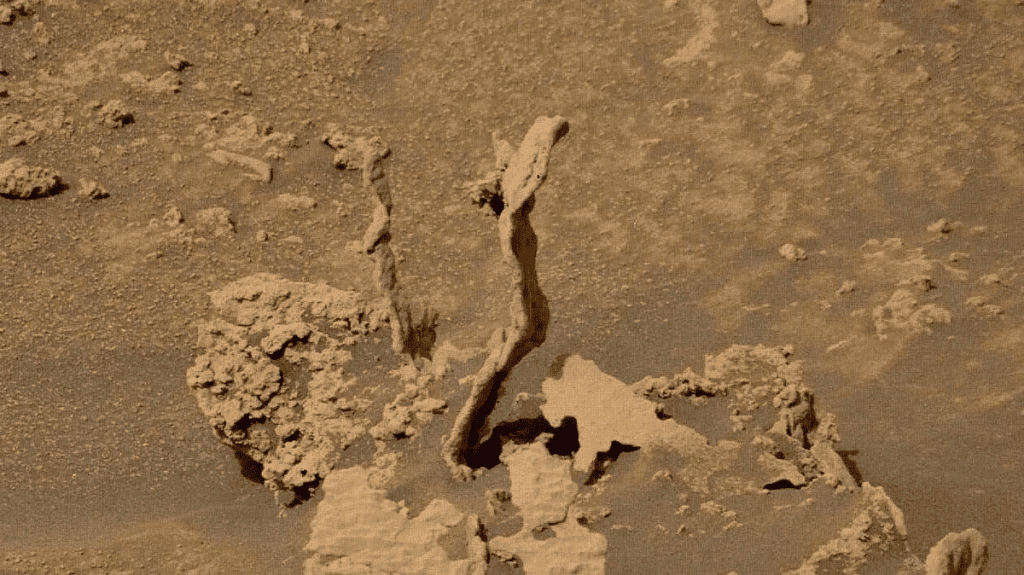
What’s interesting is that although this image was clicked earlier this year, these were probably carved billions of years ago. Back then, groundwater moved through the Gale Crater, and over the years, winds eroded all the soft material around it, leaving these things behind.
Secret doorway?
We have seen a few intriguing objects, and though there’s a lot more to come, this discovery is unbelievably interesting. Clicked by the Curiosity Rover in May 2022, it appears to be a doorway on the rocky planet…and it caused an uproar on the Internet.
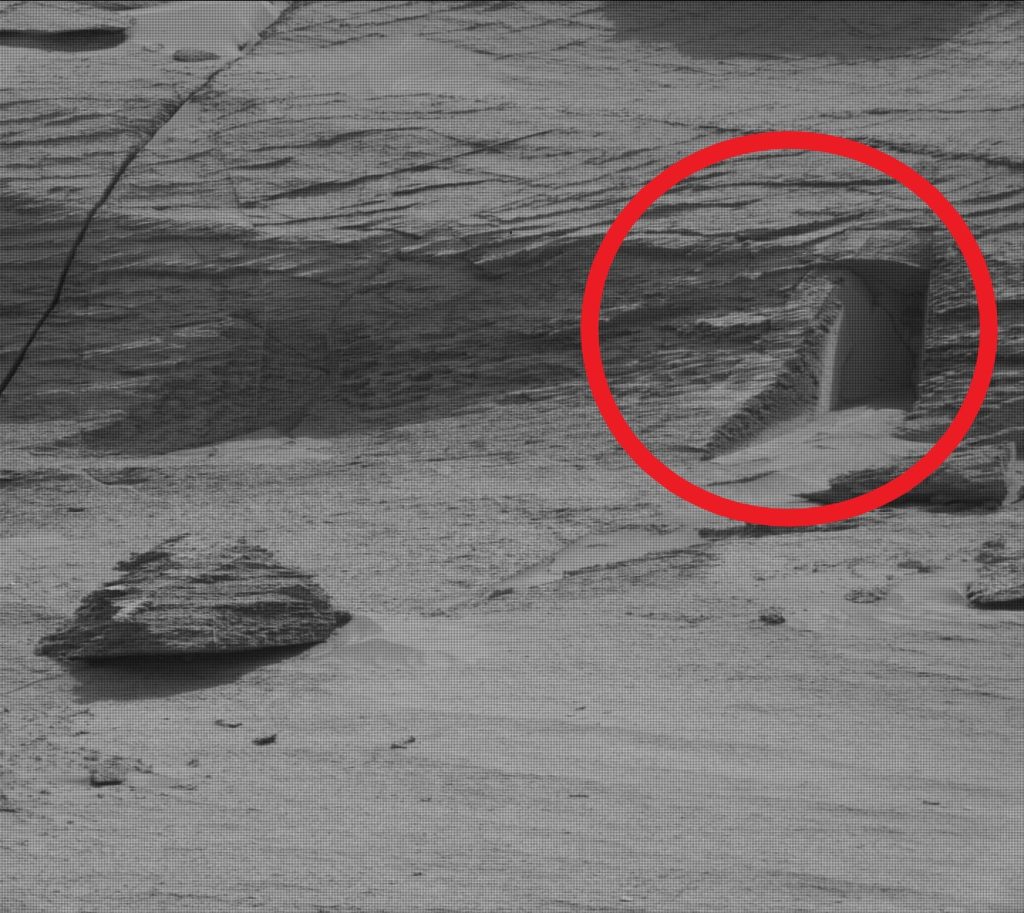
Although a doorway on Mars sounds like a very fascinating discovery, it’s not that. It only resembles a carved doorway because of the angle of the light and the shadow on the shapes in this particular area of the Gale Crater. We know that’s comparatively less interesting, but it’s the truth!
Making history
This image looks like it’s from an alien discovery, but we’re not there yet. The three little dots that you see were made with a laser on this rock on Mars. These were marked by the Perseverance Rover in the shape of the letter “L” in June 2022.
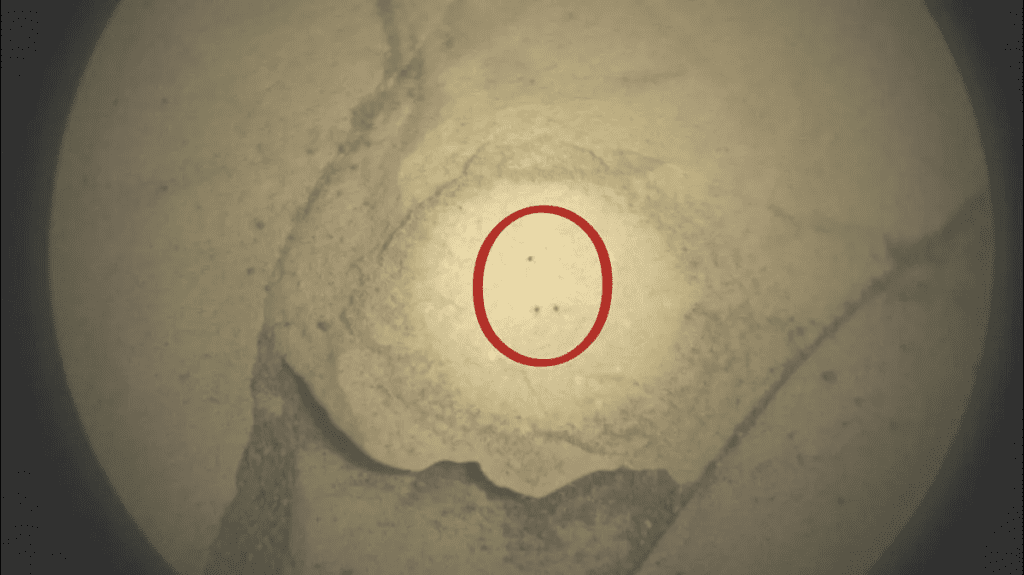
Since the Rover is gathering rock samples that would be brought back to our planet, this marker would be really helpful for scientists. These samples will be collected for NASA’s sample return mission. So, that is the first letter that was ever engraved via laser on Mars!
The funny nickname
Since NASA’s Perseverance Rover landed on the planet last year, it has clicked a lot of interesting and weird images of the Jerezo Crater, including this image. This rock looks funny, which is why it is called the “butt crack rock.”
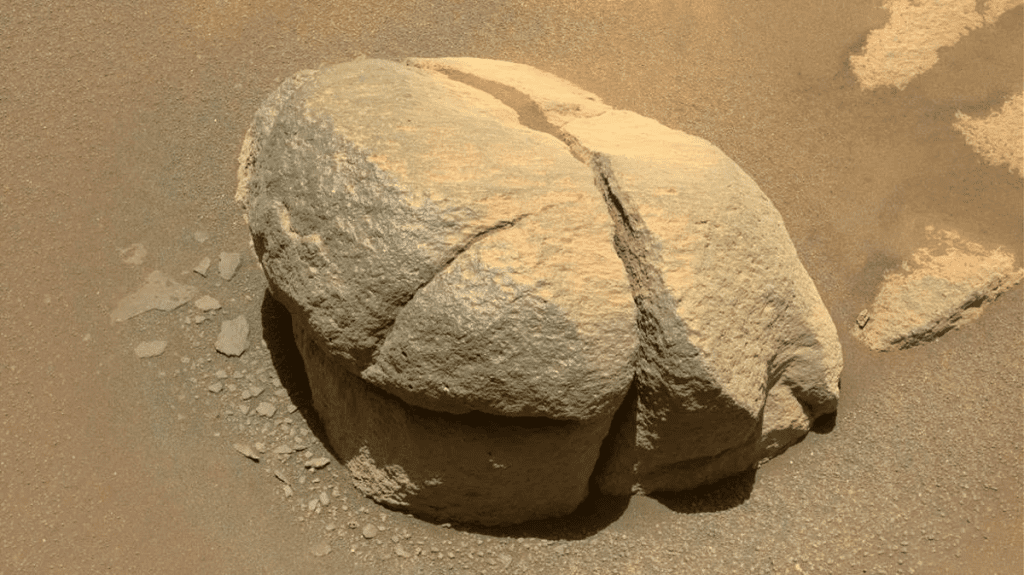
Well, nobody would wanna have that kind of a nickname. Fortunately, it’s not a sentient creature, so the aptly named rock doesn’t seem to mind. And in the grand scheme of things, it’s not really weird because many rocks have been found that look like bones, fish, spoons, and more.
Angelic painting
This image is not that of a very beautiful painting at a museum. Surely we’re not the only ones that see the human-like figure with wings and the shape of a heart. That’s why, when this image was released in 2020, it was been described as an angelic figure.
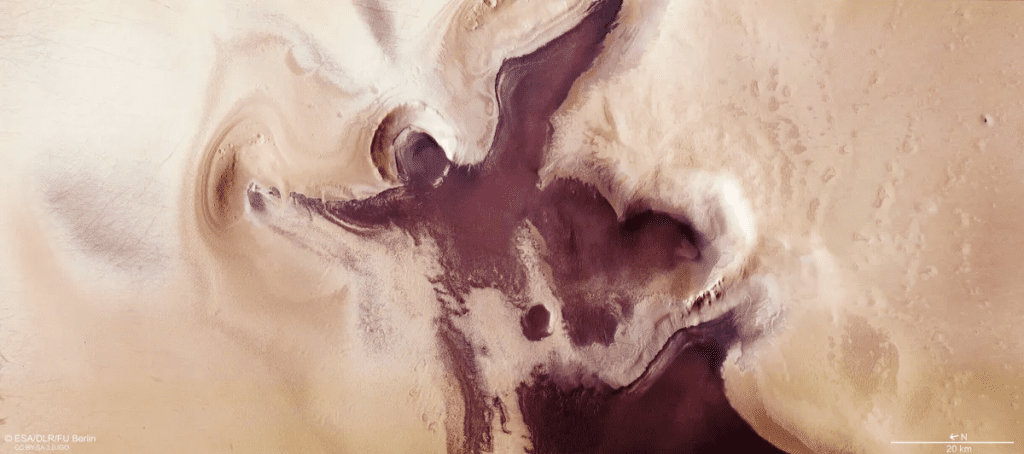
We wish it was, but the reality is far more mundane than that. It’s just a geological formation on the icy polar region of the planet. The impact crater formed the head, and the spot where the ice gets vaporized is where the hand was formed.
The silver lining
These unique and colorful clouds are not from Earth, as you might have guessed from this article’s topic. They appeared on our neighboring planet. But, we bet that if we went outside often enough, we’d easily spot clouds just as beautiful as this on Earth as well! Watching the silver linings is just a priceless experience.
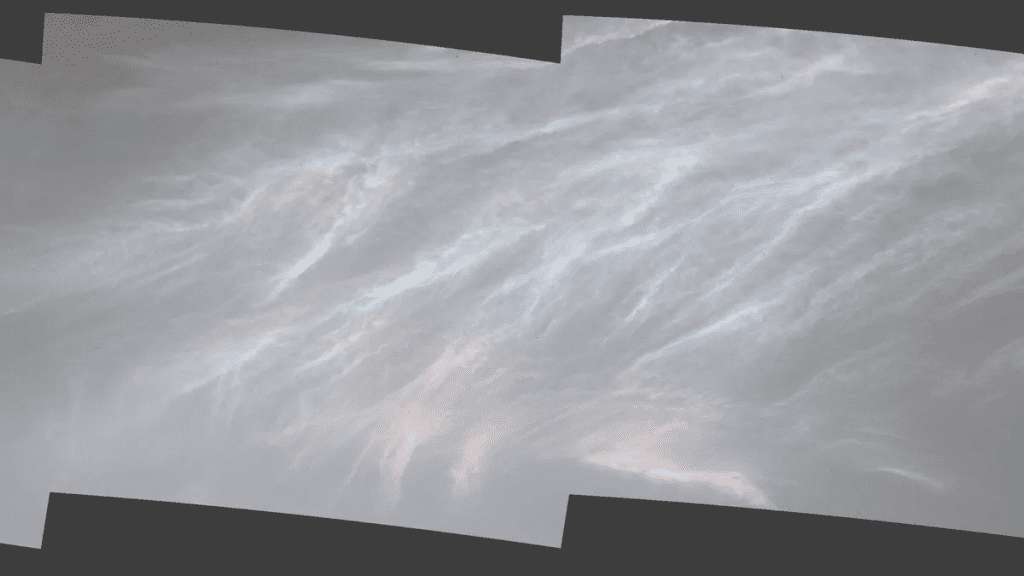
NASA doesn’t just observe the geology of Mars. It keeps an eye on the events taking place in the sky, too. This particular view was called the “Mother of Pearl” clouds. The clouds look like this because they all grew at the same rate, and the cloud particles are all of a similar size.
Polar opposites
It might be hard to believe, but there is a southern polar plain on Mars. Why do we mention this? Well, the image below is of Mars’ south pole taken by the POV of the Reconnaissance Orbiter back in 2016.
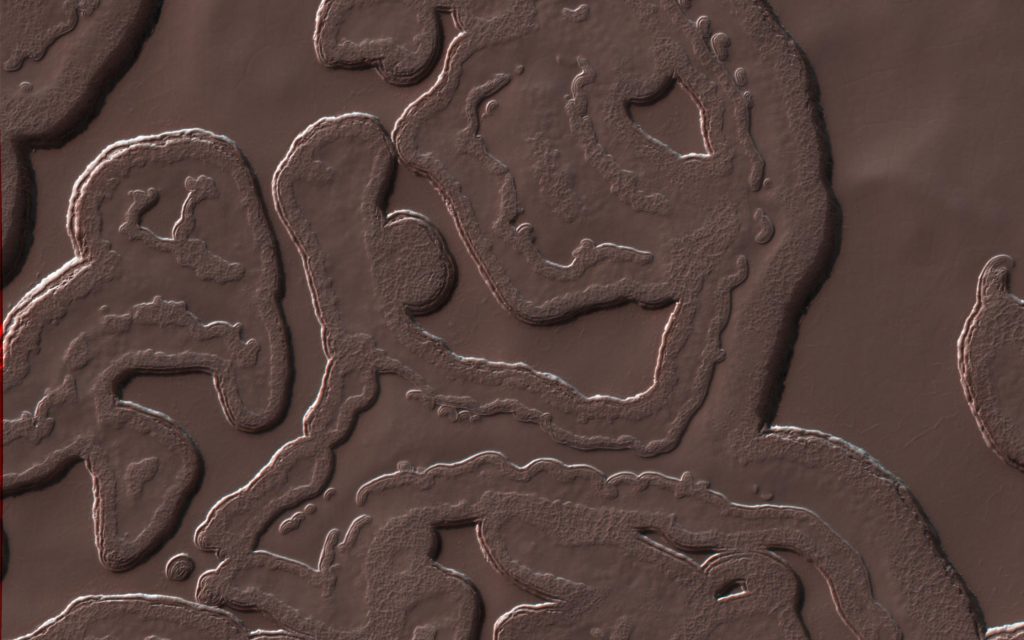
This polar cap is made from dry ice — very different from Earth’s polar caps. It looks so different from what we’d expect because of the carbon dioxide. The circular pits are the holes in the layers of dry ice, and expand by several meters each Martian year. Though the Earthly and Martian phenomena are not at all similar.
The kissing rock
A kissy alien face sounds like it comes from the Loony Tunes, but hey, Mars is full of surprises! This rock looks like it wants to lay a kiss on Marvin the Marian, but it sadly can’t even move unless the winds do something for it.
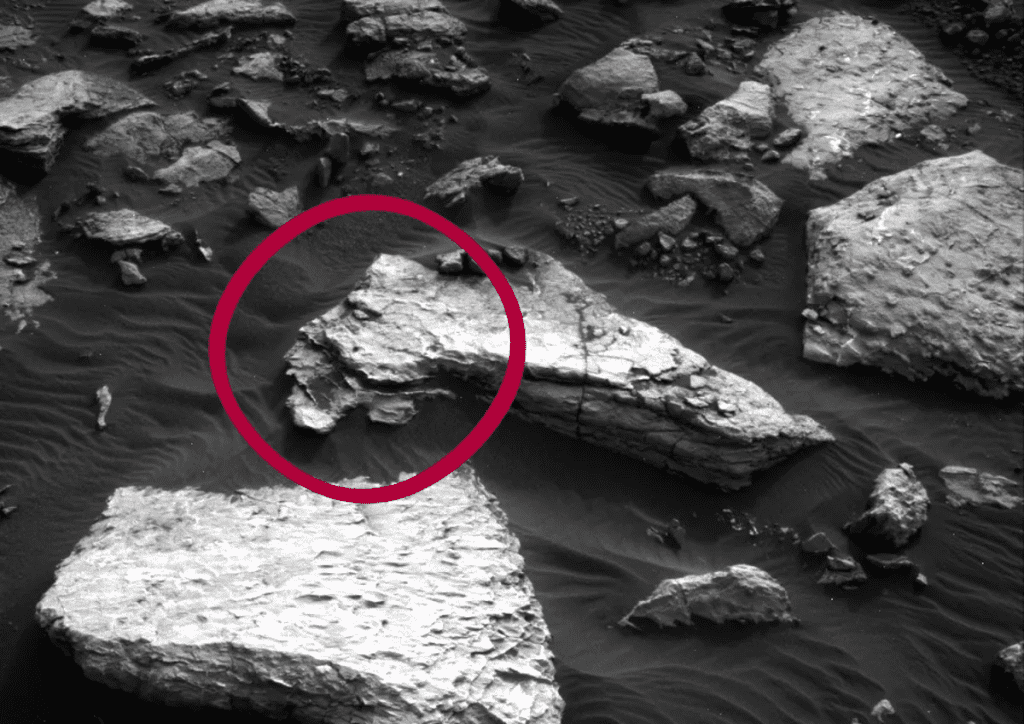
That’s just how things are on Mars. Although this image was clicked by the Curiosity Rover, the kissy face wasn’t spotted by the team at NASA. It was spotted by alien fans who were looking through these images. It’s just a funny rock formation, though.
Pointing out the face
With a little bit of time, effort, attention to detail, and pareidolia, anybody can find rocks that look like humans or aliens, especially on a planet like Mars that’s full of weird-looking rocks. This image, for instance, shows just that.
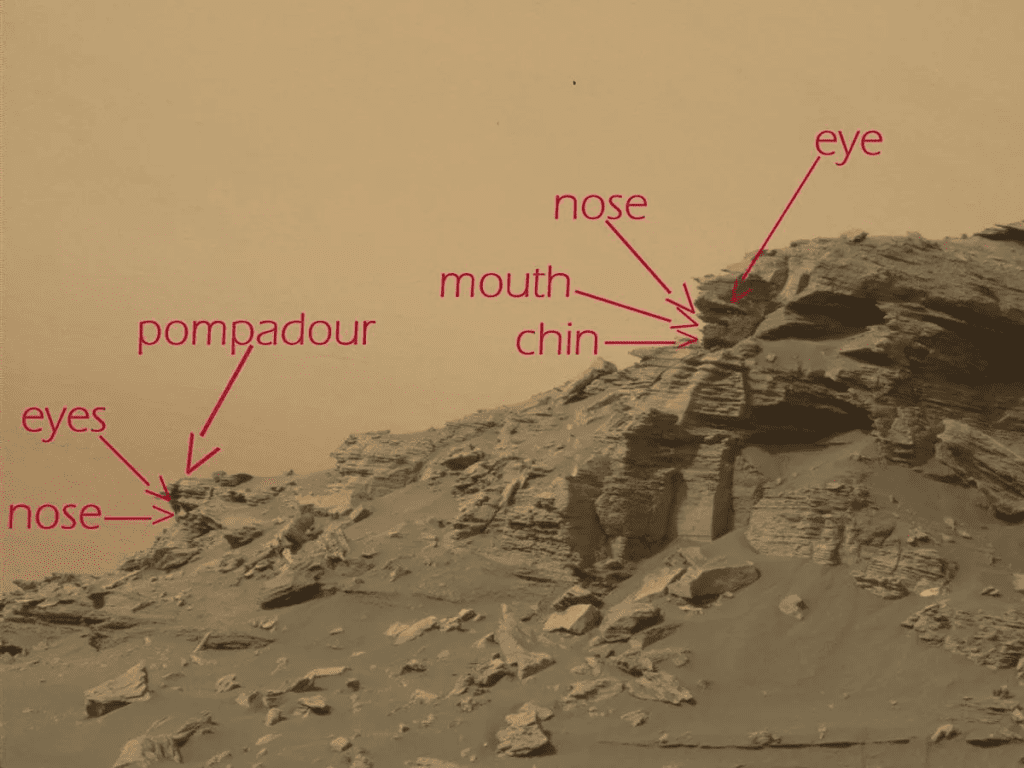
When we look at this image, we realize that somebody took a lot of effort to find rock formations that look like alien faces. After that, they went through a lot more just to detail each part of their face. This image was captured by the Curiosity Rover back in 2016.
Scratching the surface
When you look at this image, what comes to your mind? Are these weird-looking eyelashes, or are these creepy claw marks? They’re none of those. These are a set of squiggly lines that were captured by the Reconnaissance Orbiter five years ago.
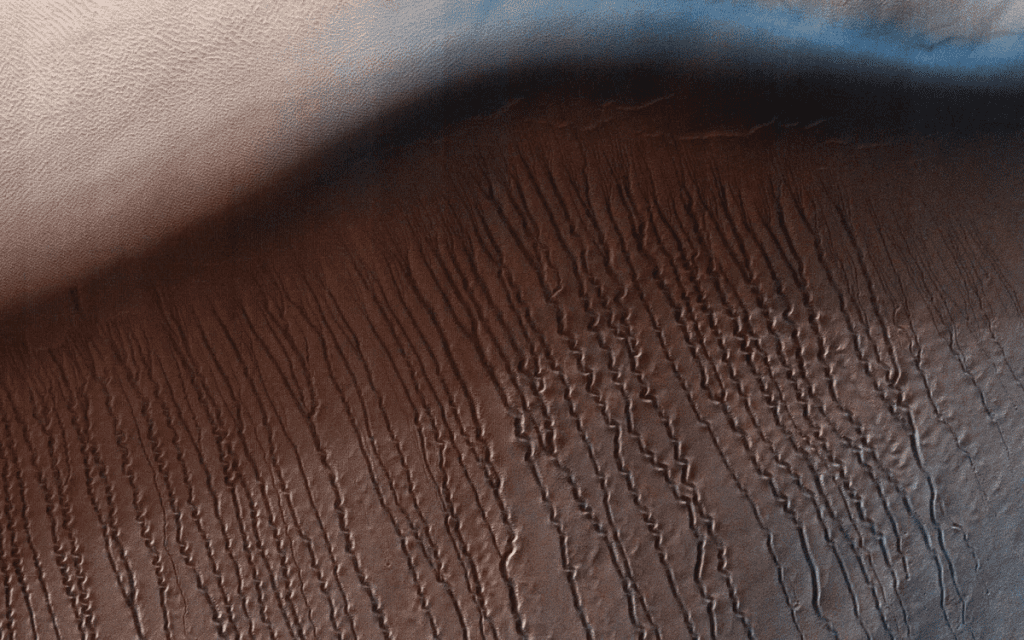
The team behind the Orbiter said that these are linear gullies that were caused as a result of dry ice moving down the sandy dune slopes. It reminds us of a snowball rolling down a slope after a skier makes a sharp turn.
Metallic chunk
We wish we could say that the Curiosity Rover captured a metallic lizard on Mars, but that wouldn’t be true. The reality isn’t even close to that. This image, captured in 2013, was fascinating enough to some space fans that they enhanced it and looked a little closer.
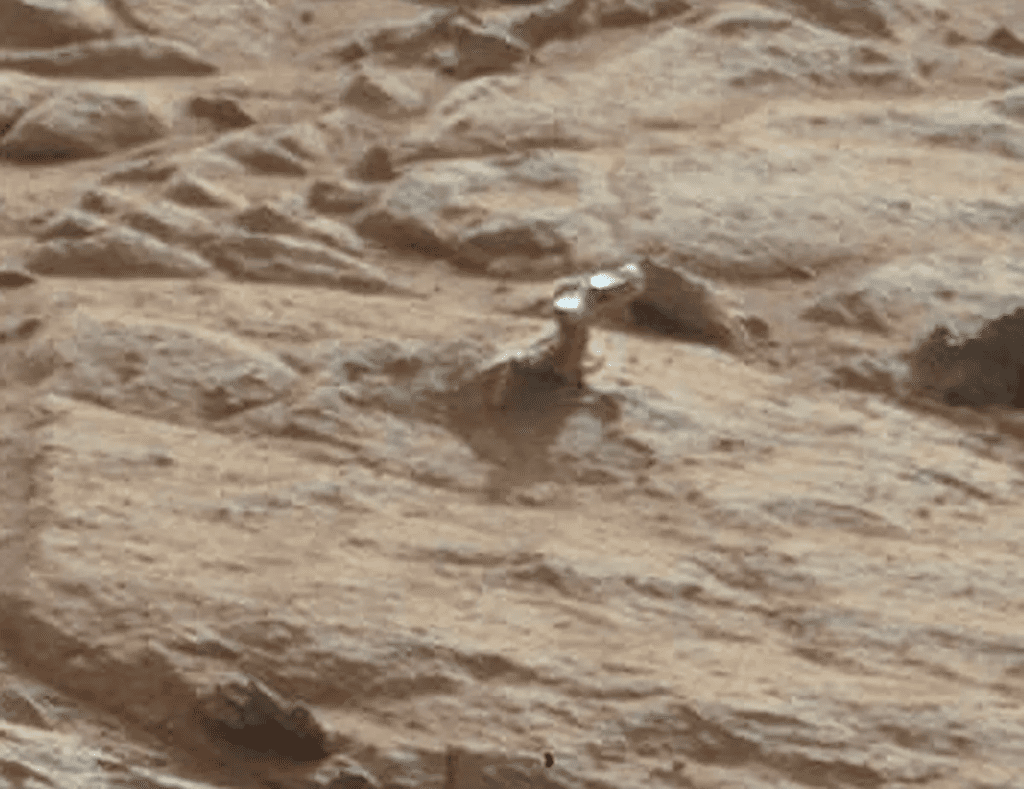
At first glance, it seemed like a bright hunk of metal peeking out the surface of this planet. In reality, it’s just a piece of meteorite, just like the boulder we saw earlier, and the brightness is probably due to lighting effects.
Unsolved mystery
To get a good look at what was happening here, NASA’s Curiosity Rover got up close to this object. This shiny object was captured in November 2018, and it immediately caught the attention of the scientists who began the investigation.
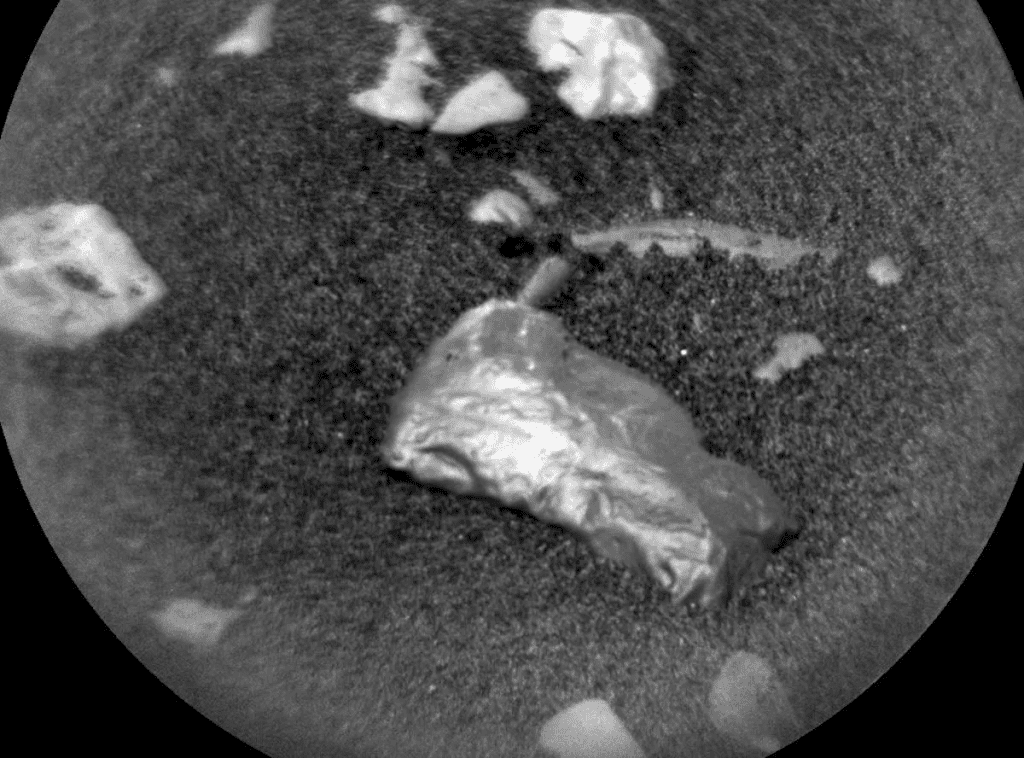
The team thought that this shiny object could have been some kind of a meteorite, but they couldn’t confirm it. They couldn’t label it without identifying and examining the composition of this Martian rock. So, it’s pretty much still an open book…
Flakes on Mars
This is another strange-looking object that caught the attention of the people behind the Mars Curiosity Rover. The image was clicked in 2018, and after looking into it, the team was concerned that it could indeed be a piece of the Rover itself.
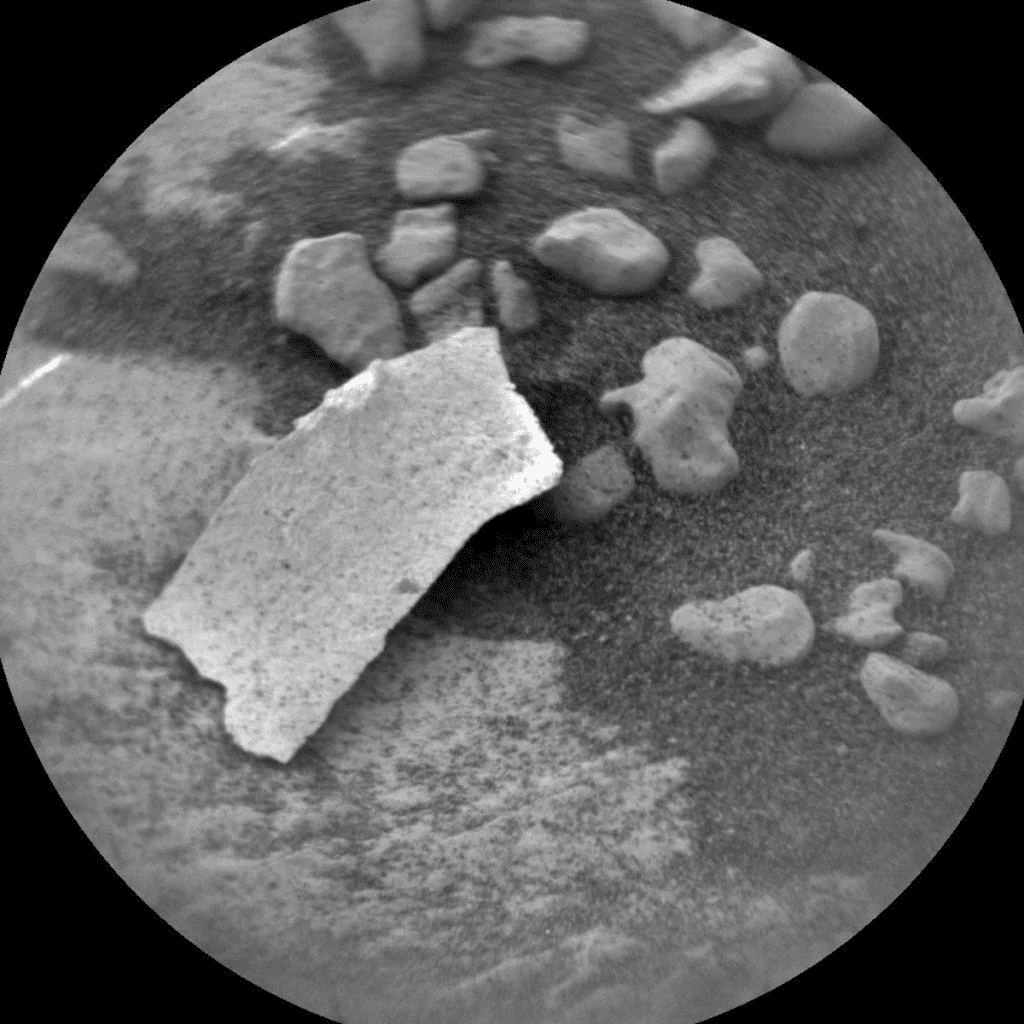
It appeared to be debris from a foreign object, which is why they thought it could be a piece of the Rover. But, when they dived deeper into the investigation, they realized that it was just a flaky part of the natural landscape of the planet.
Pac-Man is here!
We might have a bunch of video games about life on Mars, there are no video games on the planet. Still, Mars has the next coolest thing — a crater that looks like Pac-Man. That’s right, his mouth is wide open, ready to get those tasty dots.
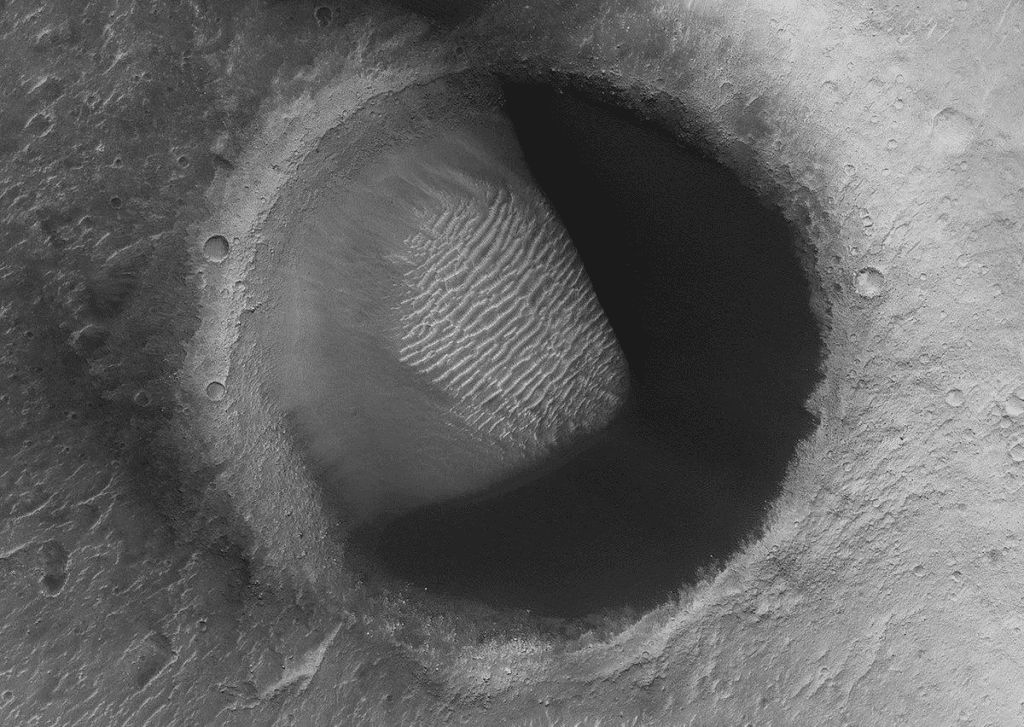
NASA’s Reconnaissance Orbiter clicked this picture of a Pac-Man crater in 2018. This crater looks like the famous video game character because of an impact crater that has a barchan sand dune inside of it that’s shaped like a crescent.
Coiled up
These spirals look beautiful; almost as if some artist designed them. But, it’s actually 100% natural, and no human had anything to do with it. These swirls, called lava coils, often occur on Mars. It’s hard to tell by a still image, but these lava coils are hardened.
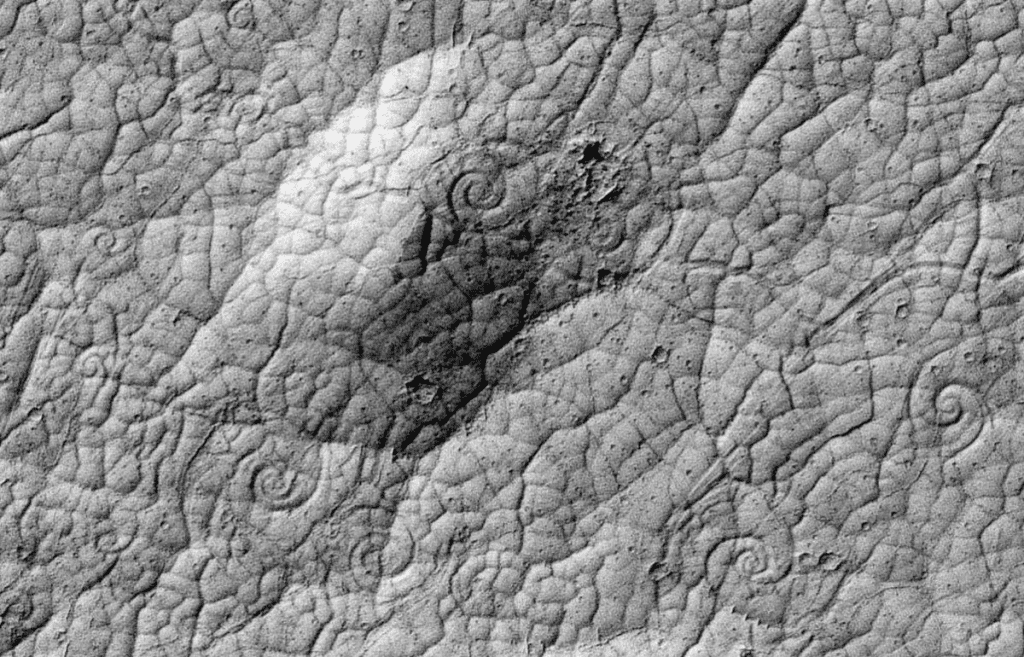
When lava flows in two opposite directions, it mingles and swirls, thus, forming lava coils like the ones in the image above. This moment was captured in high resolution by the Reconnaissance Orbiter, thanks to its HiRise camera. Watching it form would be an even more amazing experience! We can’t wait to get footage from Mars one day.
Bones
It looks like a battle was fought here, probably thousands of years ago. Doesn’t that look like a desert-baked femur? The truth is that it is an extraordinarily odd rock that has somehow acquired the shape of a human bone.
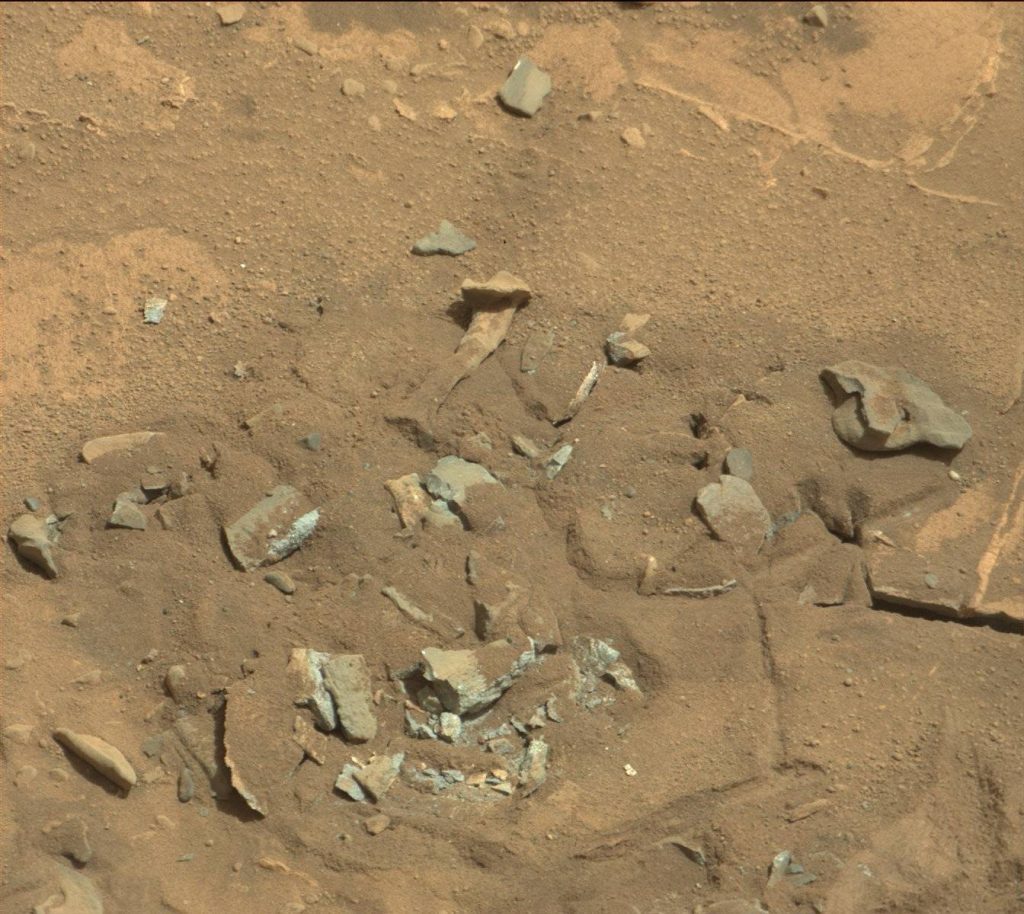
This image was clicked in 2014 by NASA’s Curiosity Rover. According to scientists, this shape is a result of wind or water erosion. So, no battle was fought on Mars…as far as we know. If humans were found on Mars, deceased or otherwise, it’d be top news for decades!
Deciphering the message
This image was captured by the Reconnaissance Orbiter in 2016, and we must point out that the clarity of these images is on a whole other level. As you can see, the image shows some bizarre formations on Mars’ surface.
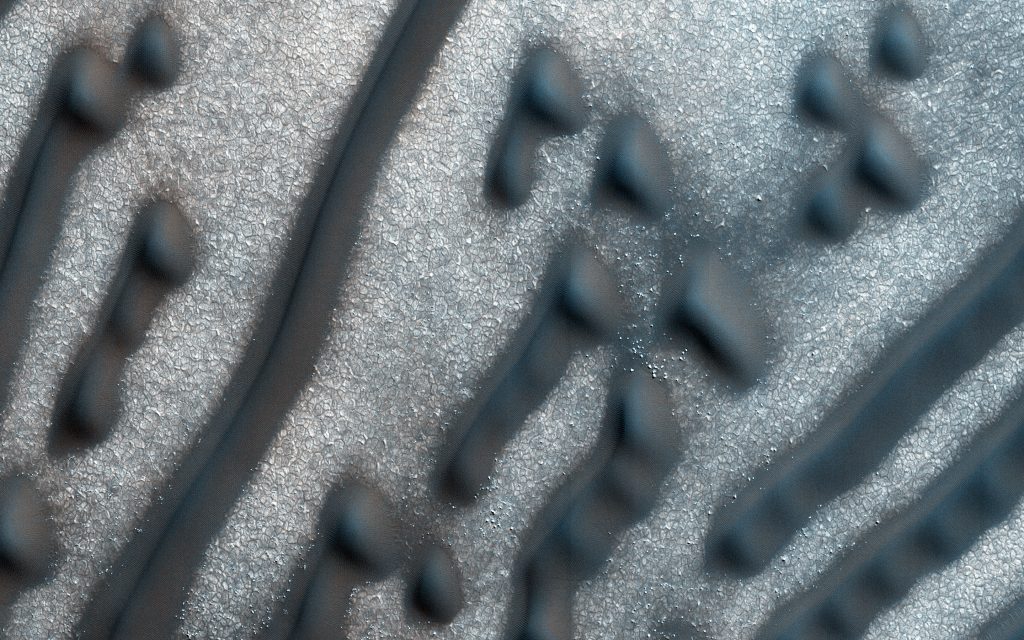
These formations look like Morse code. Now, the experts did consider that somebody might be trying to communicate something, so they checked it out. To everybody’s surprise, or lack thereof, the code just spells out gibberish. In reality, the raised areas are just dunes.
Something is fishy
We have yet to find signs of microbial life on Mars. So, as mentioned earlier, finding humans, animals, fish, or even dinosaurs, for that matter, is just all talk and fodder for science fiction stories. When the Curiosity Rover clicked this image, it grabbed the attention of a lot of UFO fans.
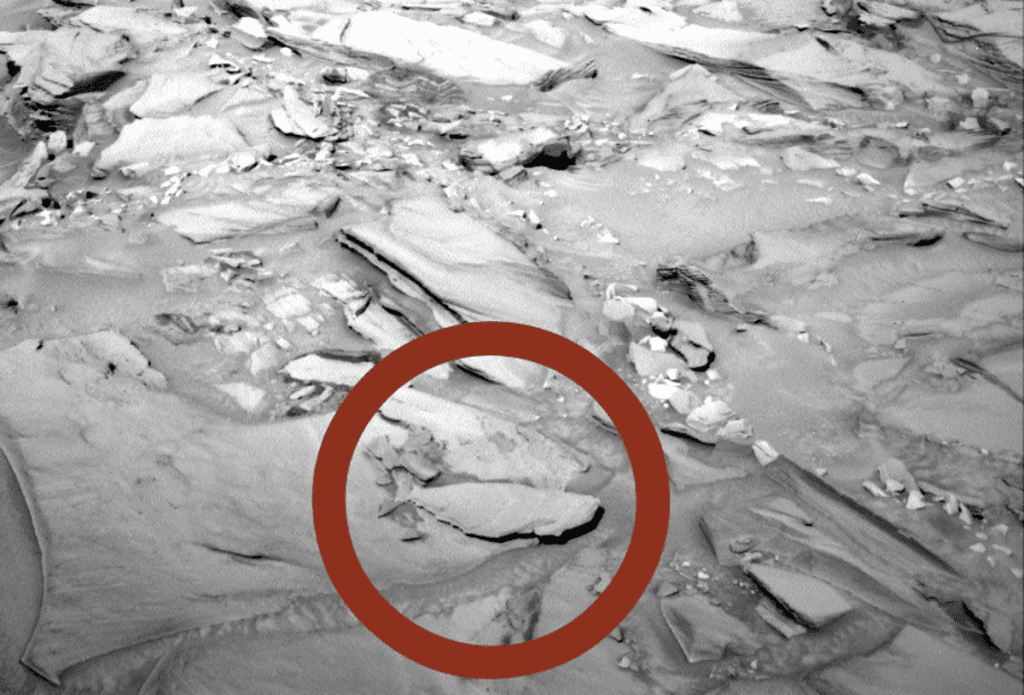
Like many discoveries, the key element in this image is also the lighting and the shape, which makes this oddly-shaped rock look like a fish. Also, since Mars probably hasn’t had oxygen in its atmosphere, there are not many chances of us finding fossils of animals.
Out of nowhere
Finding odd-shaped rocks on Mars might have become a theme here, but what do you think about a rock that wasn’t there one second and, in the next second, it was? It just appeared out of nowhere, which is what we can infer from this before-after pic.
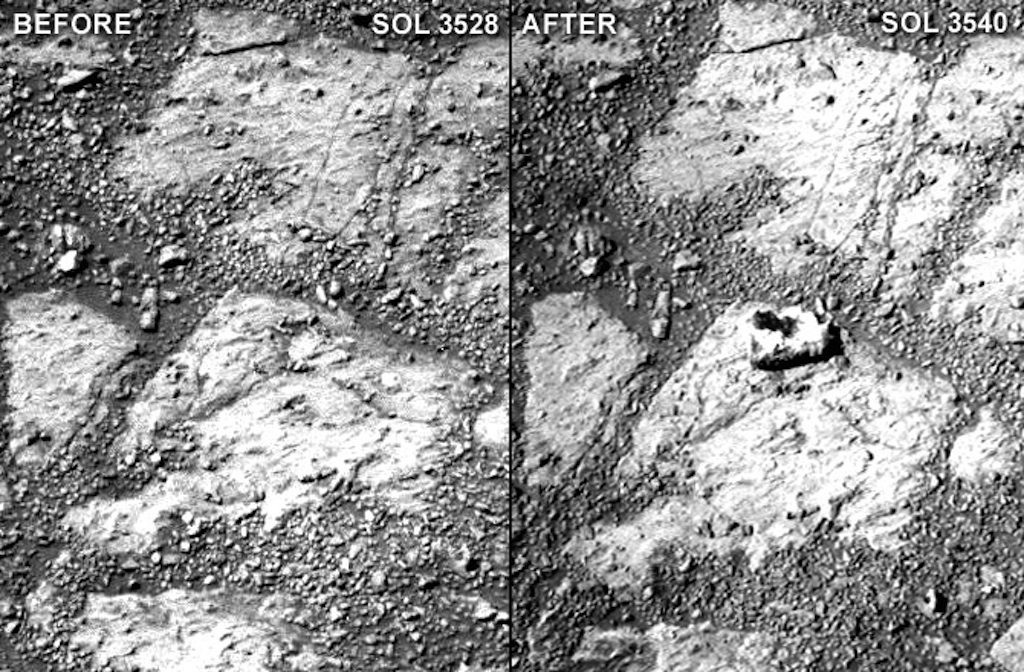
Did somebody place it? Is it an alien fungus? It’s none of that. It’s just a rock that looks like a jelly doughnut, and there’s nothing magical about it. The rover dislodged it by driving over it, which is why it looks like this appeared out of nowhere.
Tasty treats
If the black gravel wasn’t there in the background of this image, with a bit of editing, this picture would look like an image of really tasty blueberries. There are no Martian blueberries, but these little spheres are rich in hematite, which is the reason behind their appearance and their nickname, “blueberries.”
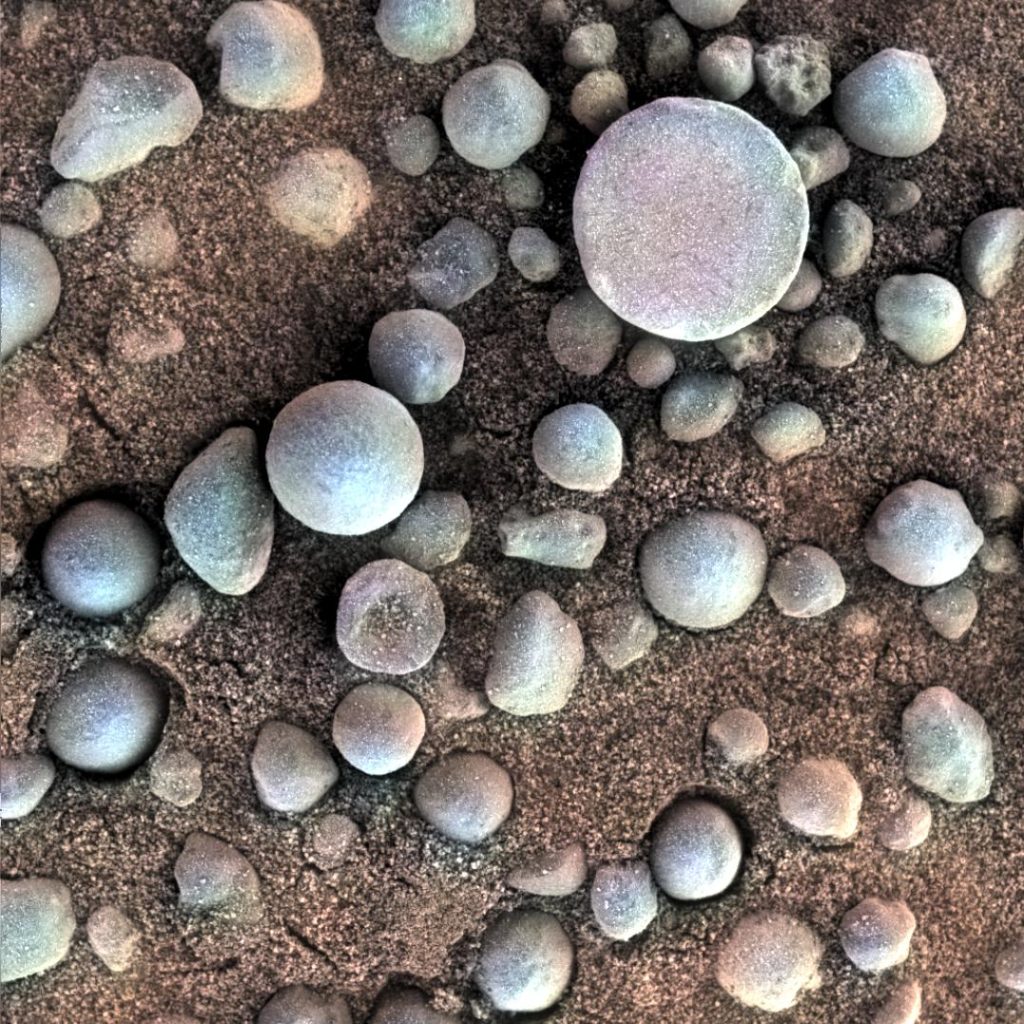
Even if they’re not edible, they look really pleasing in an aesthetic sense. They were captured by NASA’s Opportunity Rover long back in 2004. The variety of rocks and objects on this planet is truly fascinating. There’s a reason so many of these pictures have been sent back to Earth.
Not so tasty treats
As we saw before, the Opportunity Rover clicked a wonderful photo of Martian blueberries on the planet’s surface in 2004, but that’s not all. It also clicked this image in 2012, which looks like the blueberries are stuck under the planet’s surface.
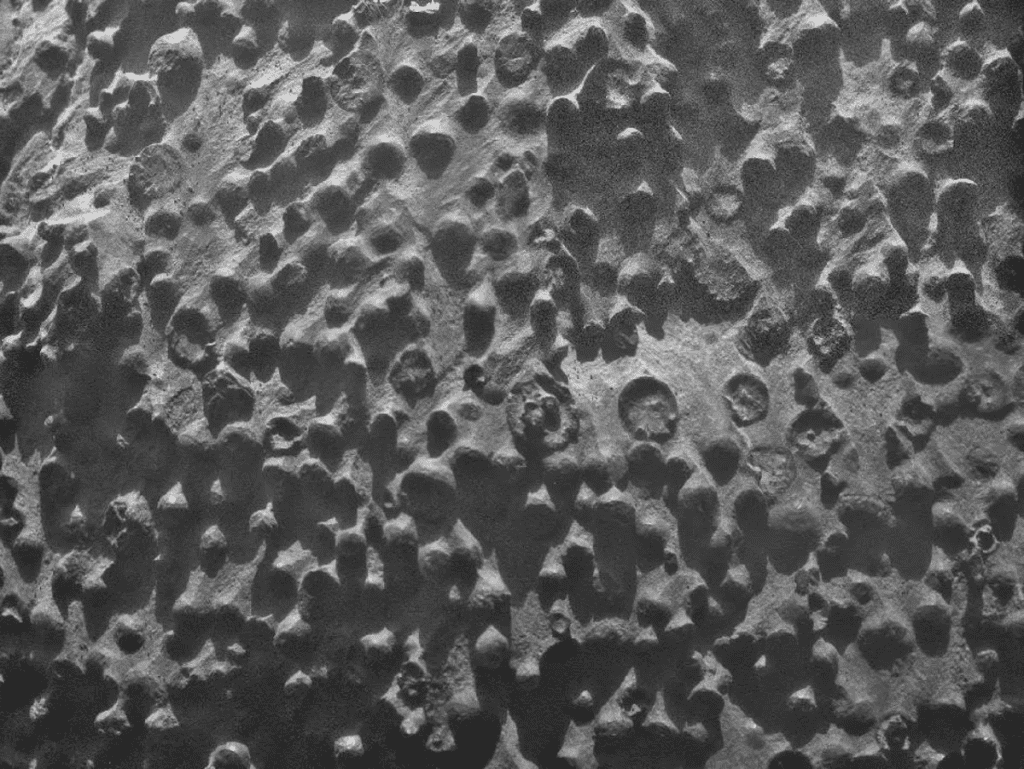
This unusual formation was at an outcrop called Kirkwood, and the spherules in this image aren’t as hematite-rich as the ones we saw earlier. They’re different in terms of structure and concentration as well. Scientists termed it puzzling, and we agree with them.
Odd-looking tadpoles
As you already know, there’s no Earthly life on Mars, so this image can’t be of a tadpole. Nope, it has nothing to do with baby amphibians. It is just an odd formation that was spotted by the Reconnaissance Orbiter.
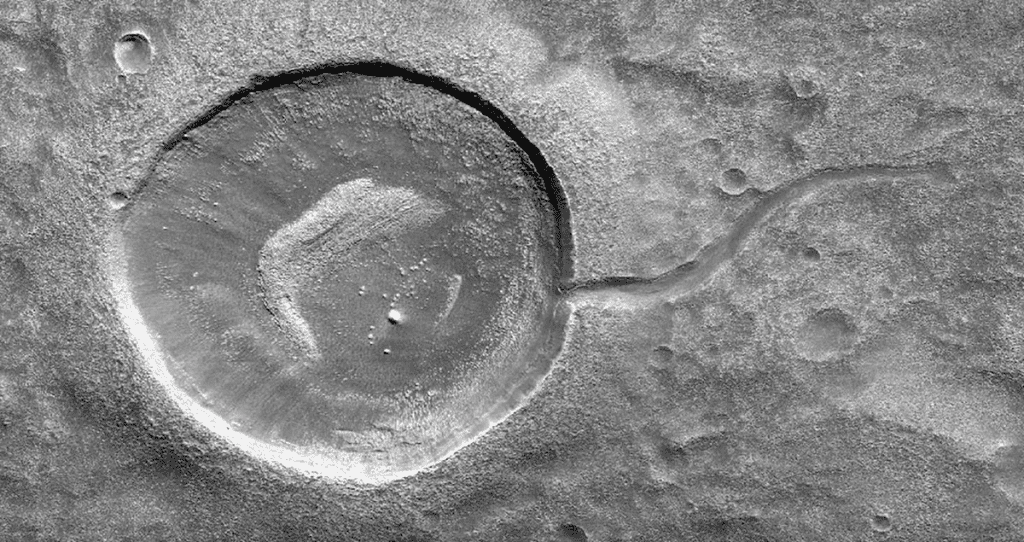
You can call it a tadpole, a yo-yo, or anything else based on your perspective. But, it’s a circular crater and is obviously larger than what it looks like in this image. The tail is a result of water movement around it. There are no amphibians in the water, though!
Scenic dust devils
When you see this amount of empty land, the realization that Mars is such a huge and unexplored planet kicks in quite fast. We’re so glad that human tech is so advanced that we can send rovers to Mars, that in turn provide us with pictures of their findings.
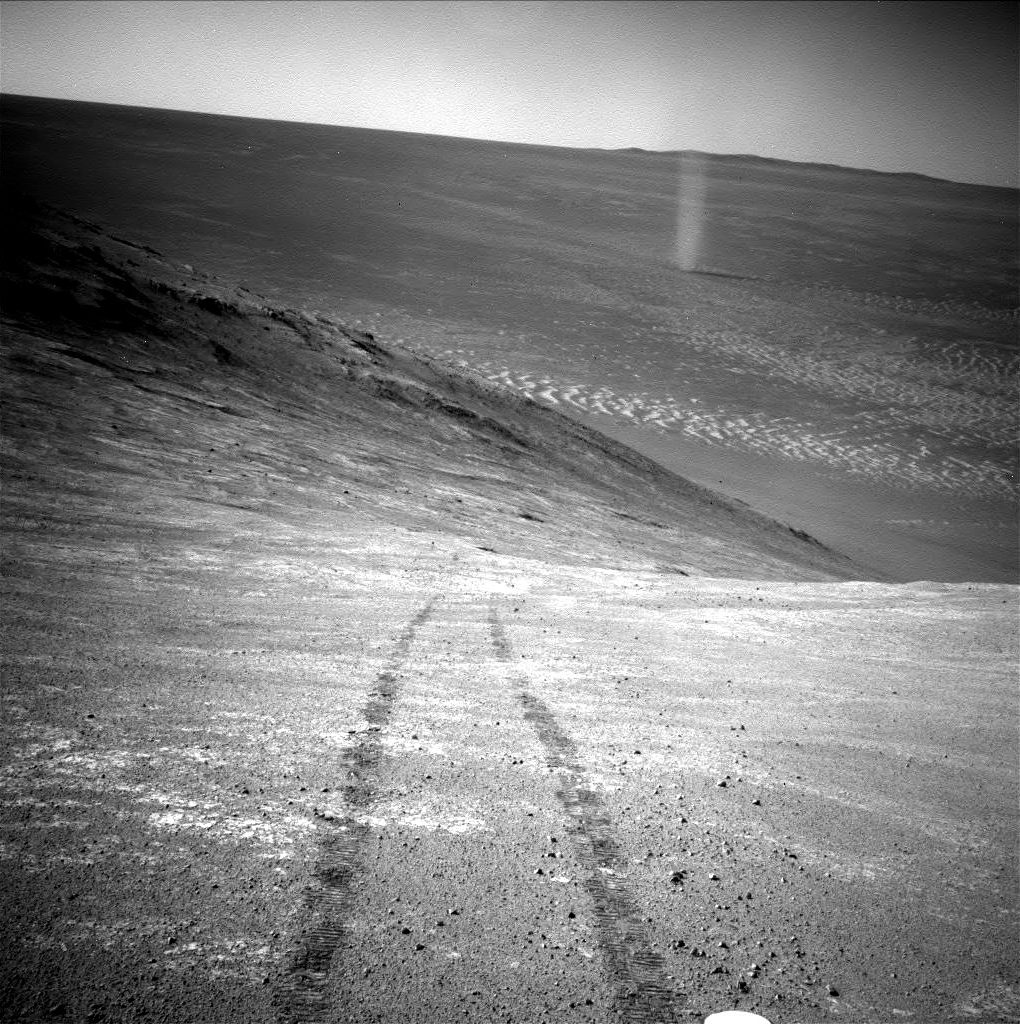
It looks like tire tracks, but it’s a dust devil, much like the one we saw earlier and the ones we see on Earth as well. This image was clicked by the Opportunity Rover in 2016, and it’s quite scenic. Future human visitors need to watch out for Martian dust devils.
Rumors, rumors
UFO enthusiasts and their blogs have a lot to do with piquing the curiosity of people with their theories. They have a really funny but understandable theory about this image. In 2017, a blog posted this image, which was an up-close look into the spherical object.
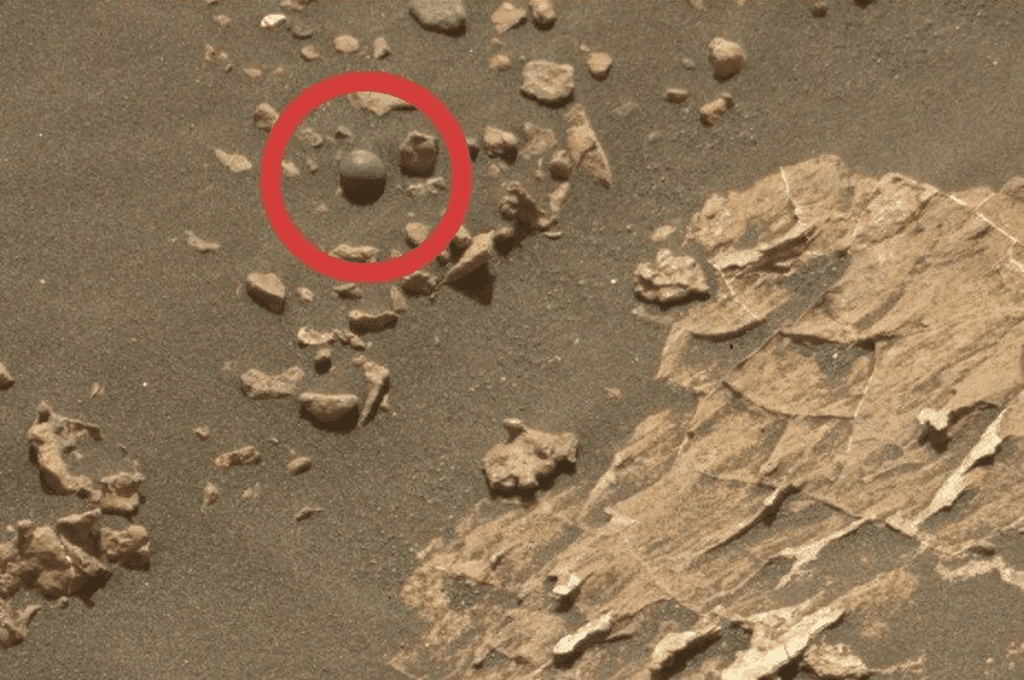
The object was spotted by the Curiosity Rover. The UFO enthusiast blog suggested that it’s a cannonball that was left after a war on Mars. The rover team, in response, stated the truth, saying that it’s a solid mass that’s less than 5mm in size.
Martian disasters
We wouldn’t ever wanna be near something like this, but from a distance, this sight is one to behold. It’s a cloud of particles puffing up a cliff on Mars. We get these sights on Earth too, but those are factory-made, and both cases are not even alike.

It’s not a factory on Mars. It’s an avalanche on Mars! Either that, or it’s carbon-dioxide frost, and according to NASA, such events take place during the spring season on Mars. Yes. There’s spring on Mars. Rovers landing on Mars at that time are on spring break. Just kidding!
Waffles, anybody?
We often dream of visiting islands made of food. Rivers of milk, trees that bear candies, and so on. After seeing this image, we can’t help but imagine a waffle island. If that existed, then we’d certainly see even more work being put into humans visiting Mars.
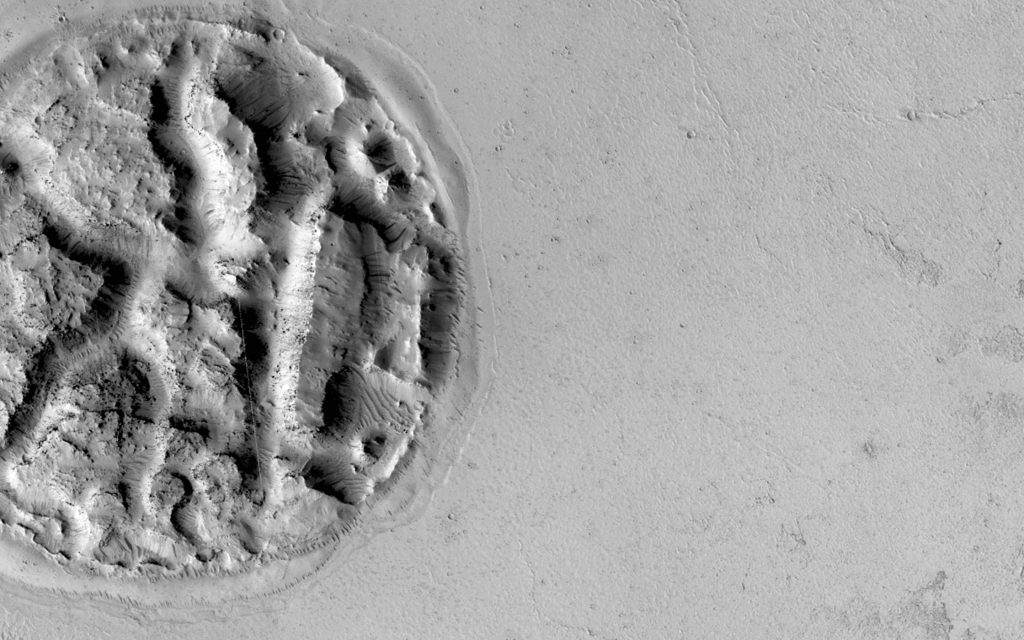
There are no waffles on Mars, let alone a waffle island. But, it is a waffle-shaped island inside Mars. It’s 1.2 miles wide, and there’s a lot of lava around it. The ridges and the waffle shape are a result of lava pushing from within.
A scaly image
We haven’t even found dragons on Earth, so we’re not even gonna assume that this has anything to do with dragons on Mars. But, we can surely say that NASA was pumped for Game of Thrones, which is why this image was called Dragon Scales of Mars.
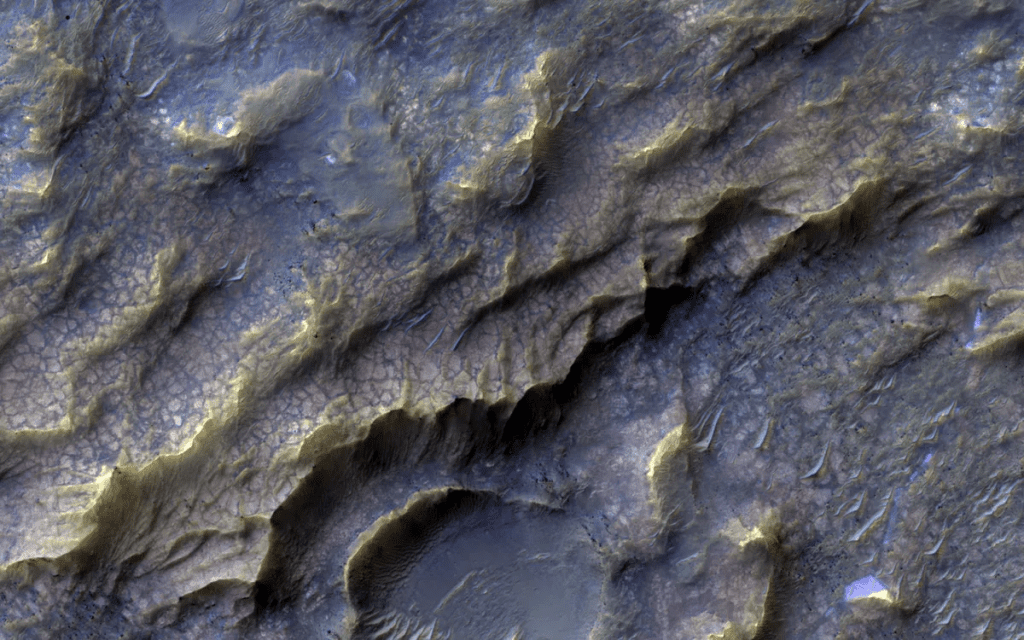
Captured in 2017 by the Reconnaissance Orbiter, this scaly pattern is not that of dragons. Instead, it’s a really old landscape that has been eroded. Water interacts with the rocks, forms clay, and so on. We are familiar with that here on Earth, but scientists have yet to understand how it works on Mars.
Full of shine
Seeing a shiny thing in a secluded place on Earth raises a lot of suspicion, with some people assuming it’s been left by aliens. Imagine a shiny thing on a faraway planet with no signs of life, much less a polished object appearing out of nowhere.
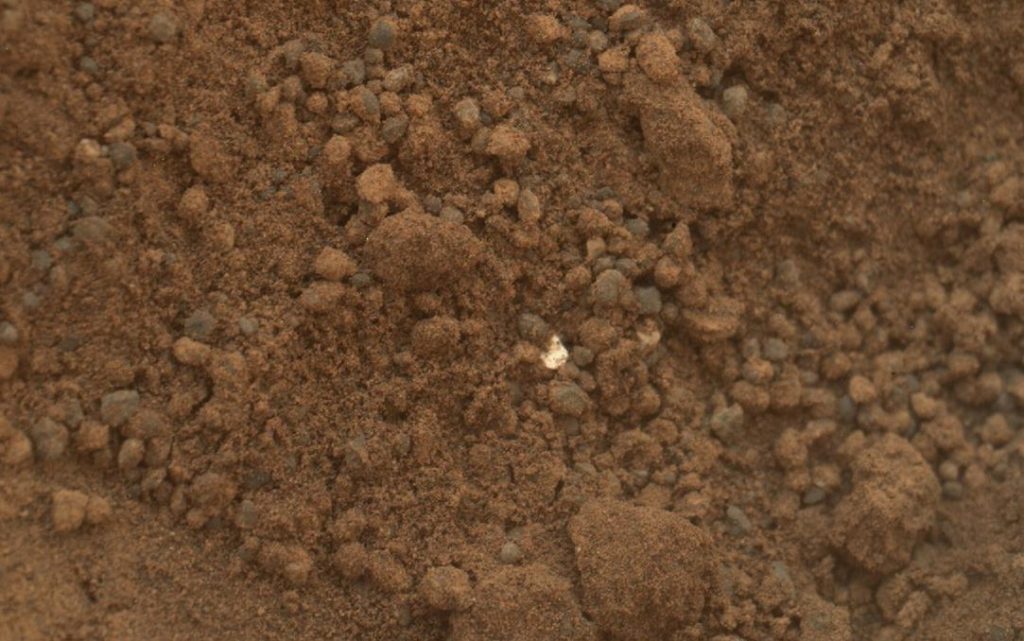
In 2012, the Curiosity Rover spotted this shiny object on the soil of Mars. It looks like it could be big, but it’s really not. It’s just 1.6 inches in size. According to scientists, the tiny little object is just a part of Martian geology. It has nothing to do with alien life.
Follow the light
If there wasn’t a lot of research and reasoning behind this particular image, it would’ve surely been considered a sign of life or something mysterious on Mars. This image of a light blip on Mars was clicked by the Curiosity Rover in 2014.
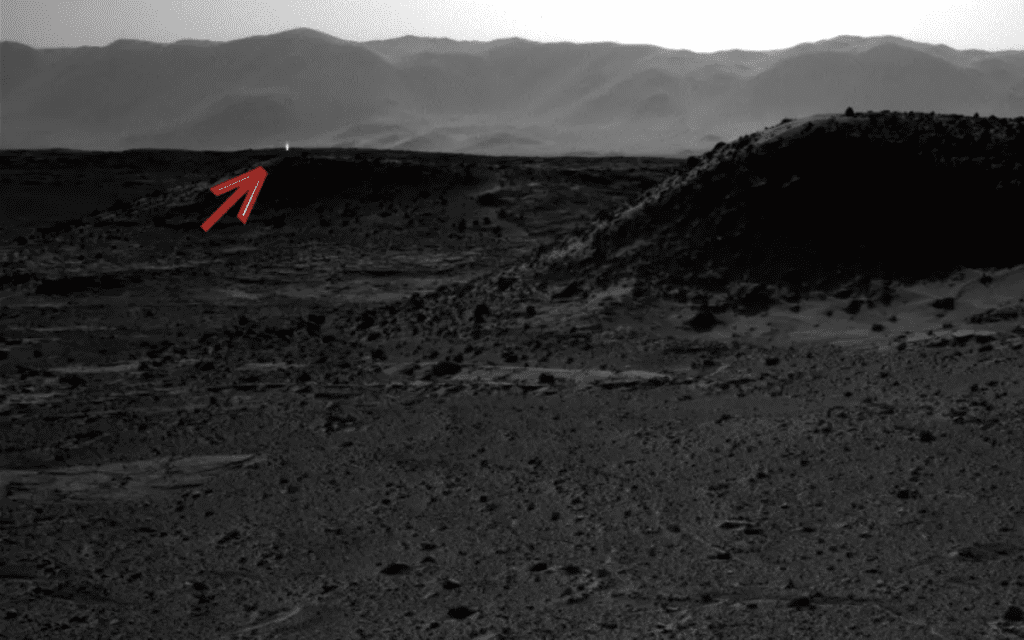
Obviously, the image excited UFO fans and conspiracy theorists, who immediately started wondering if this light was evidence of aliens on Mars. But, this blip was formed because of a cosmic ray hit. High-energy particles were flying through space, and the result is in the image before you.
Statue
A statue on our neighboring planet? It sounds believable because this image looks like it was clicked on the set of Star Trek rather than on Mars. NASA’s Spirit Rover clicked this one in 2007, and just like us, everybody thought that it was a statue.
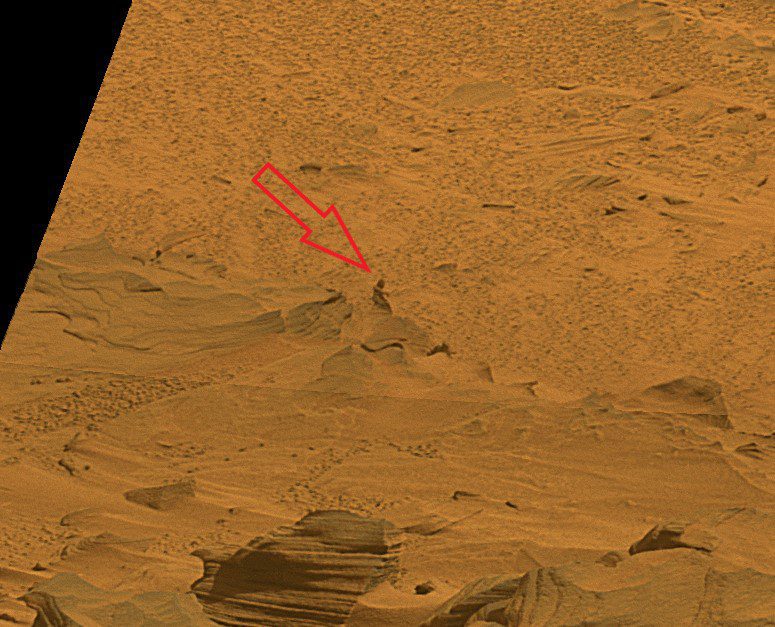
But it’s only one of the many rock formations you can see in this image. Although it stands out, we assure you that it’s nothing more than an optical illusion. We often assign familiar patterns to random things, which is why we look at it as a statue.
Whose head is that?
If a severed head was found on the empty lands of Mars before we found the signs of life on this planet, it would basically be the beginning of the end. NASA’s Opportunity Rover delivered this image in 2009, but it went viral in 2016.
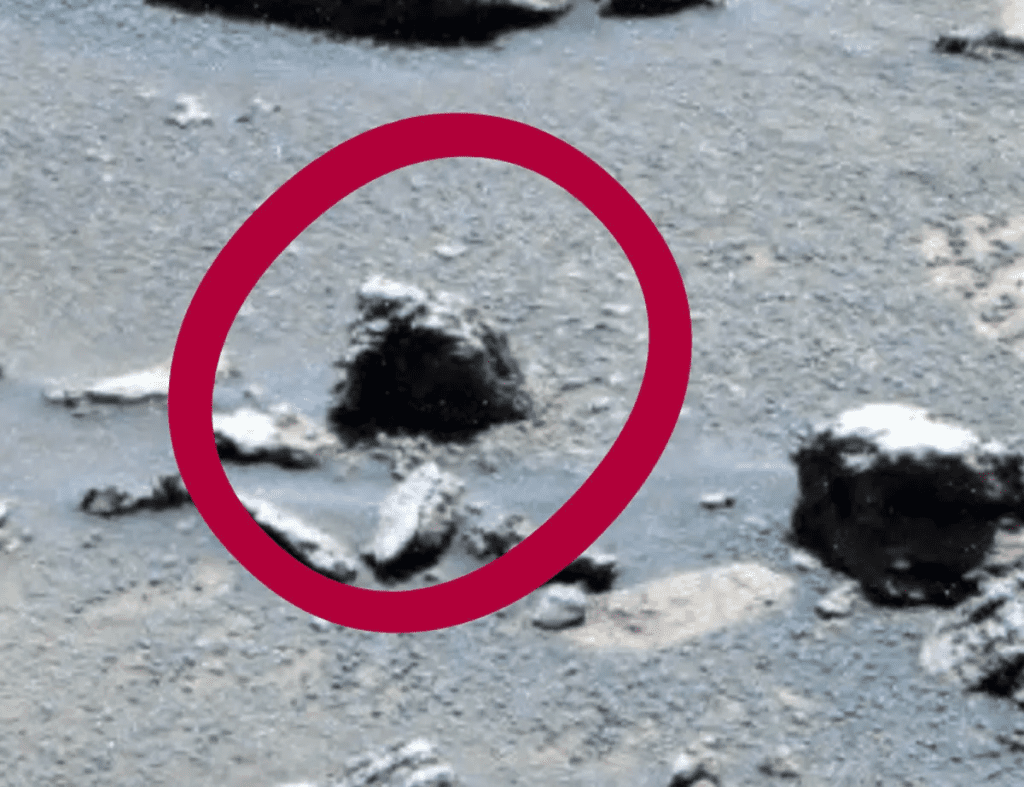
Why did it go viral? Well, because the head looks a lot like former US president Donald Trump. Or, rather, his hair. Again, it is just a rock, and again, people thought of it as Donald Trump because of pareidolia.
Show yourself, Cthulhu
This photo was clicked by the Curiosity Rover in 2015. Honestly, this could’ve blended right in with all the other Mars photos that get delivered to the scientists. Somebody noticed this one, and when it went viral, it gained a lot of attention.
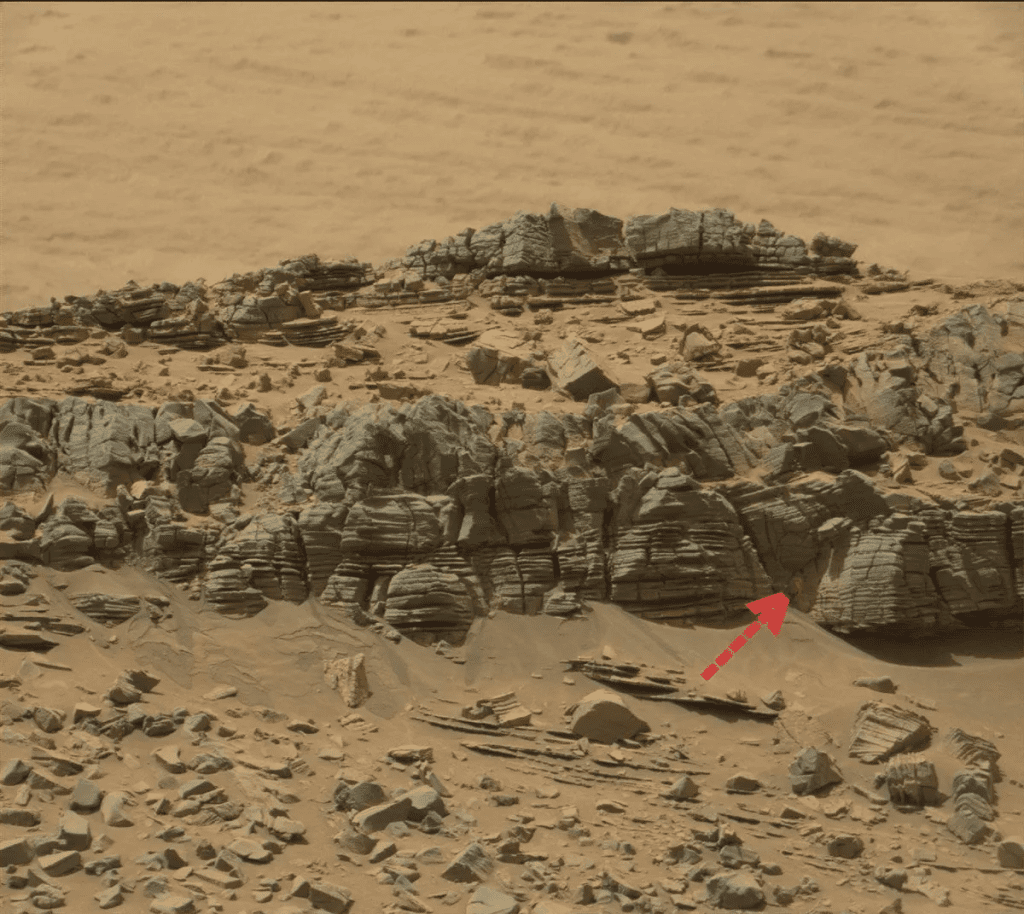
When this photo reached the hands of a Facebook group, they enhanced one of the tiny pieces (as pointed out) and made it look like a crab monster looking right at the rover from the shadows. But, it’s just the formation of the rock doing its work with help from the shadow and light.
Striking resemblance
On your left is an image captured by NASA’s Opportunity Rover a few years ago. On your right is the statue of a Neo-Assyrian god from our planet, located at the British Museum. When these images are side-by-side, can you spot the similarities?
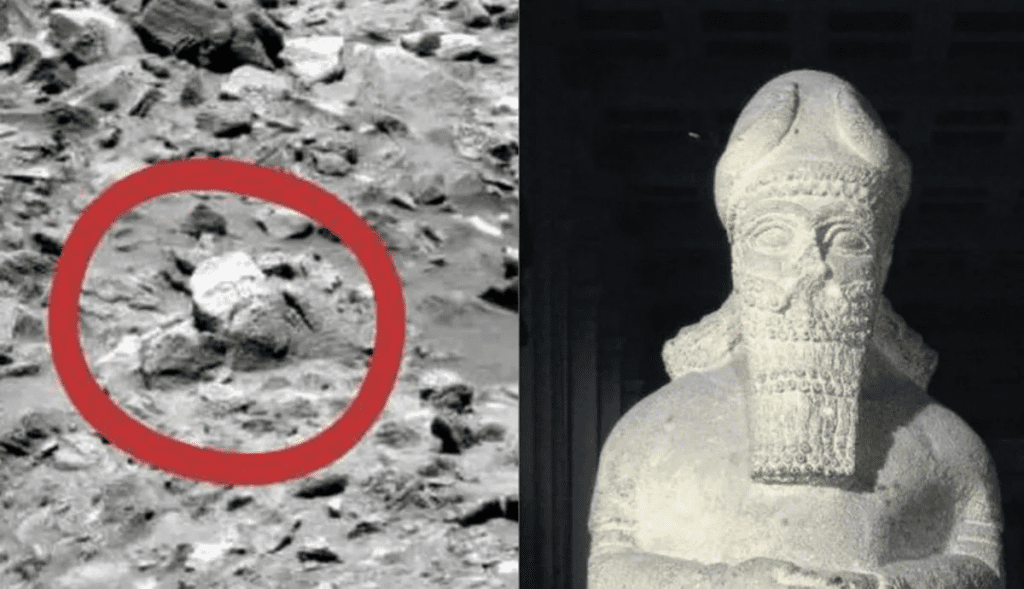
Some of you might have found some resemblance, and so did we and many UFO fans. These two faces look quite similar, especially the beard. But, it’s a rock that looks like the face of the Neo-Assyrian god. The rest is all pareidolia.
